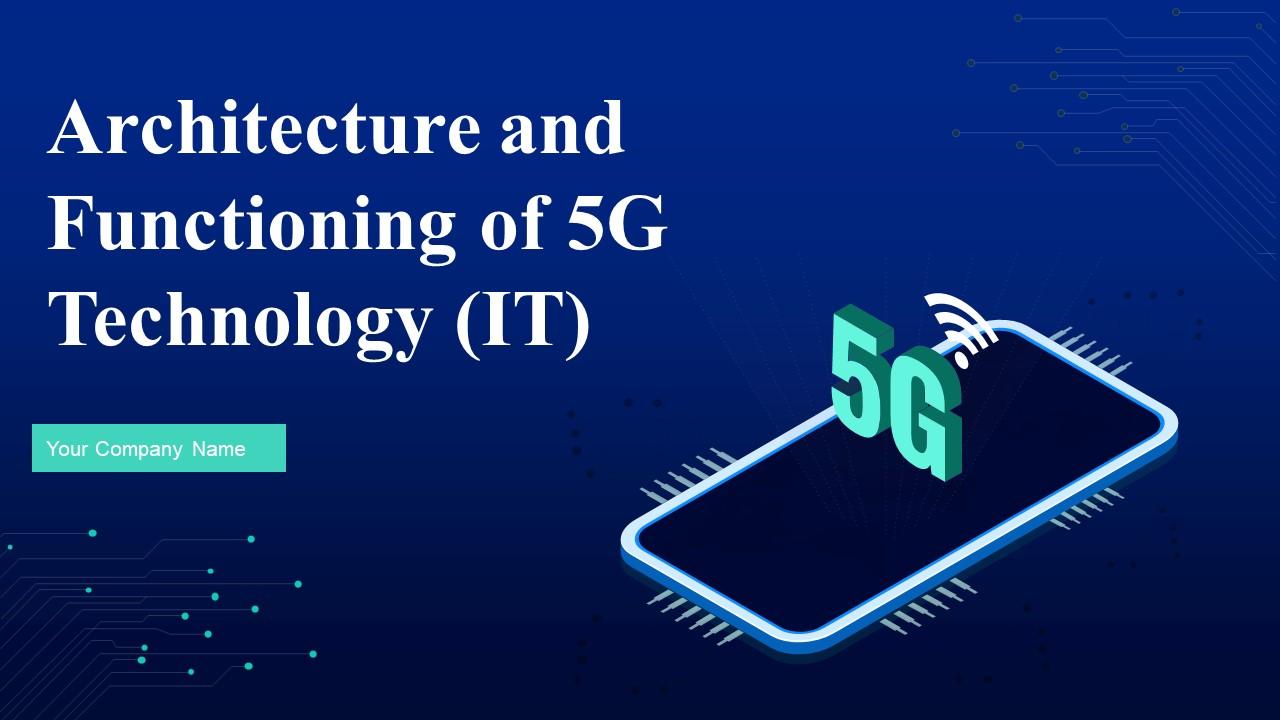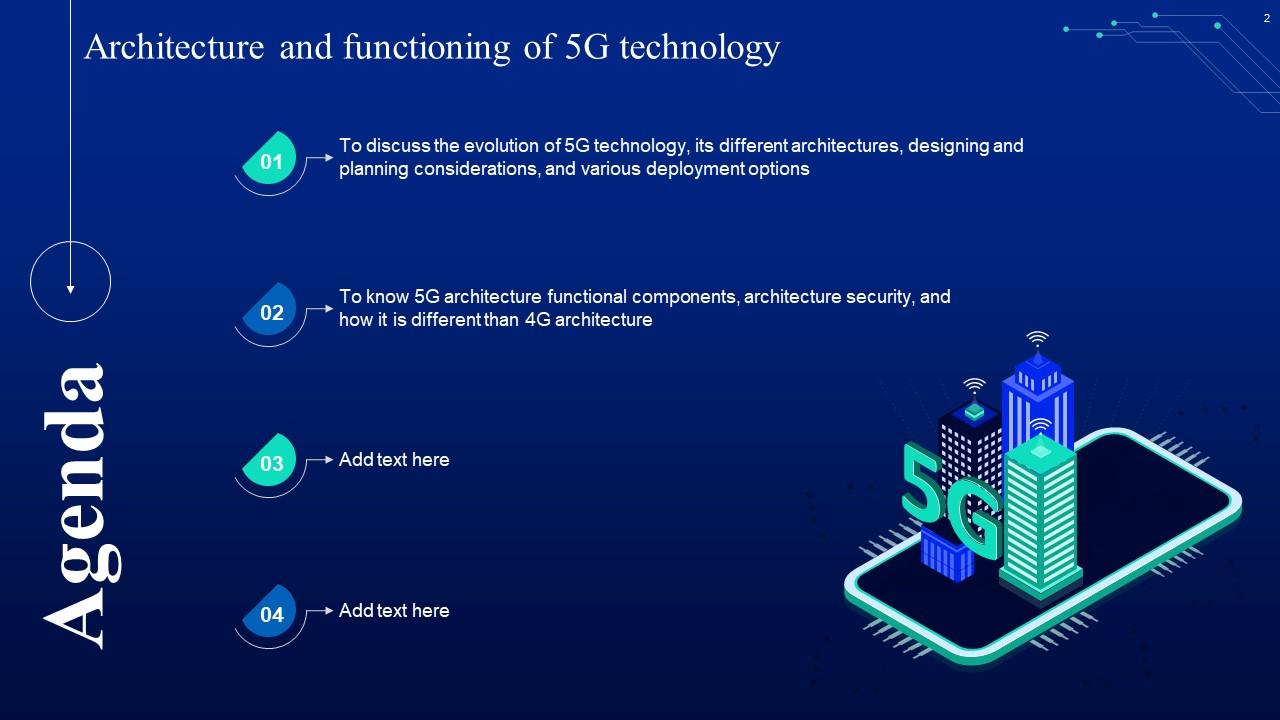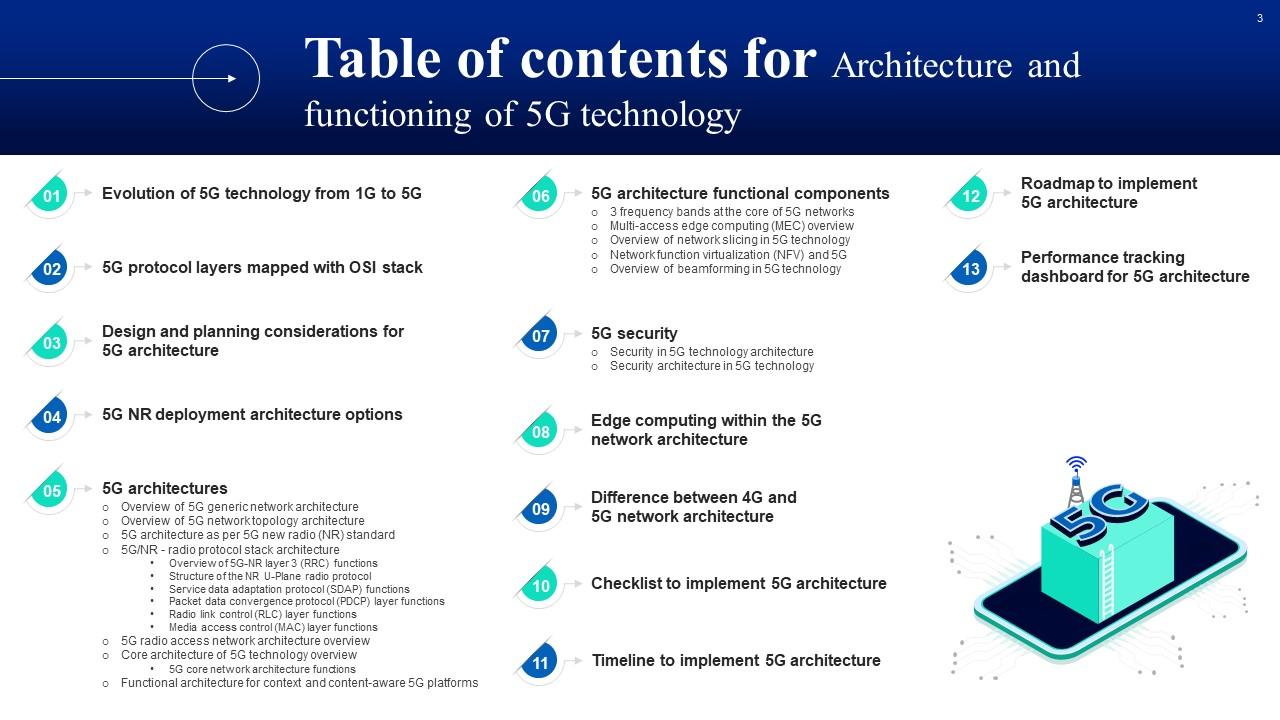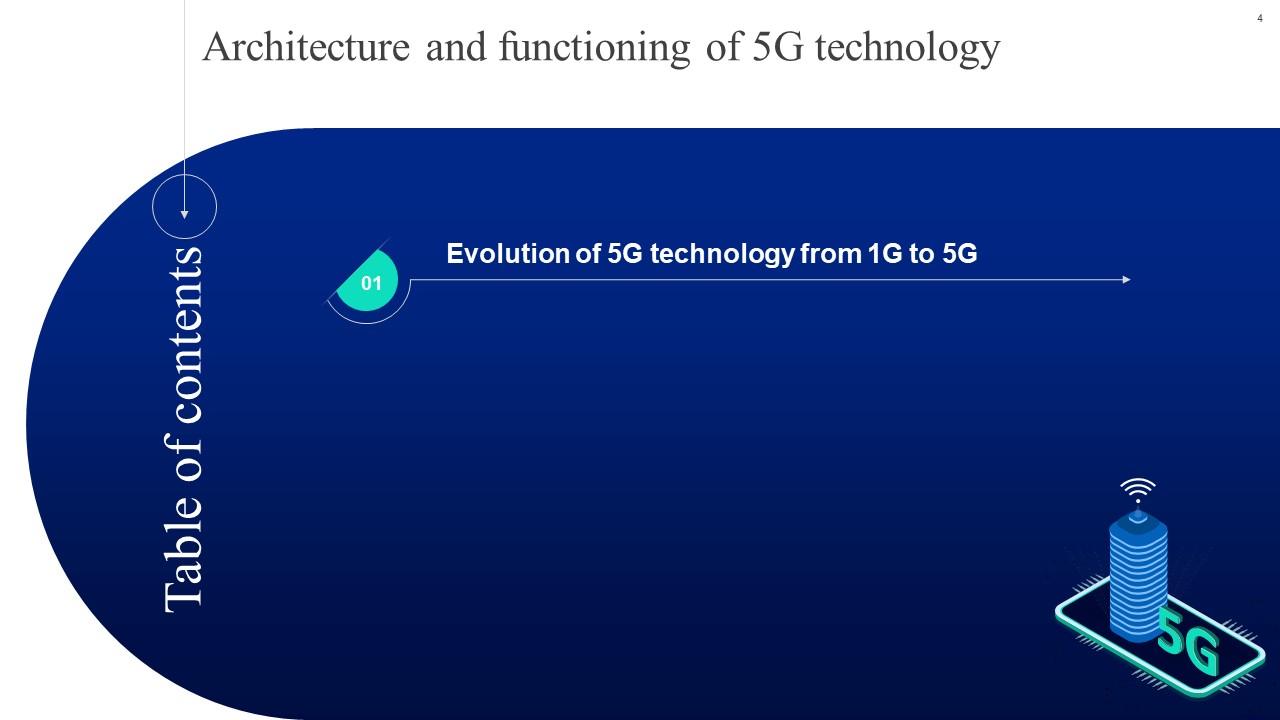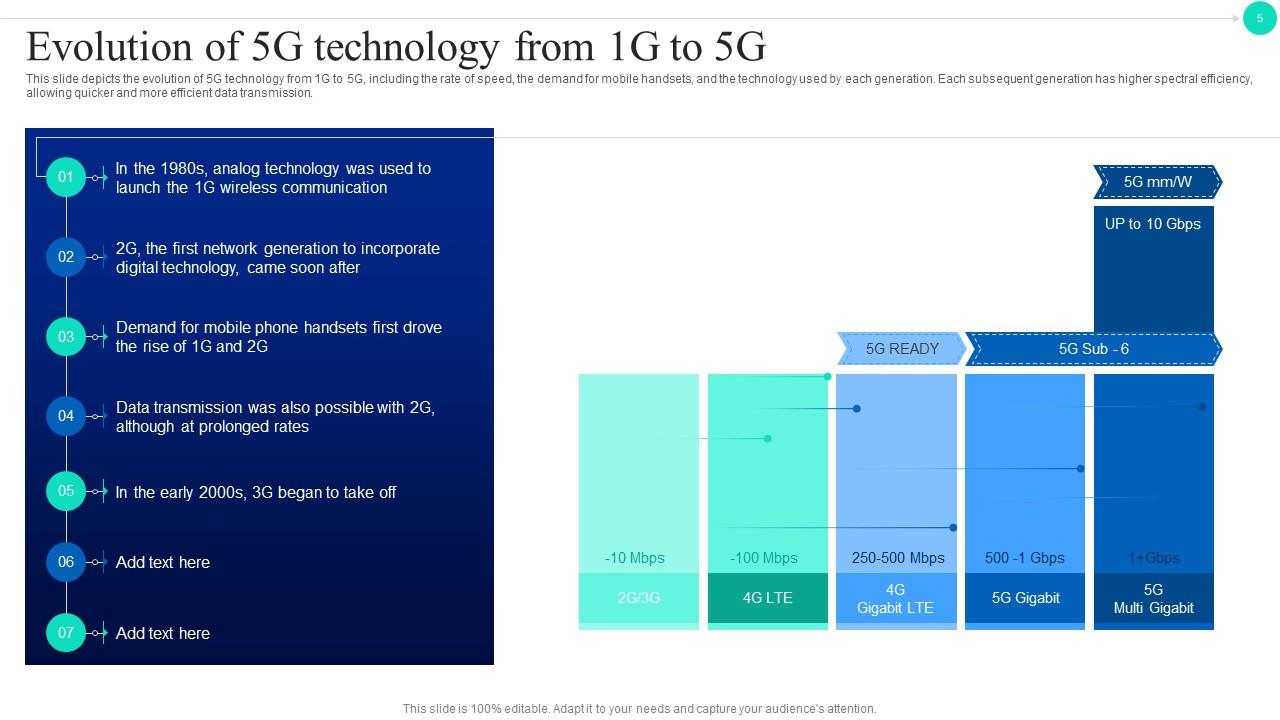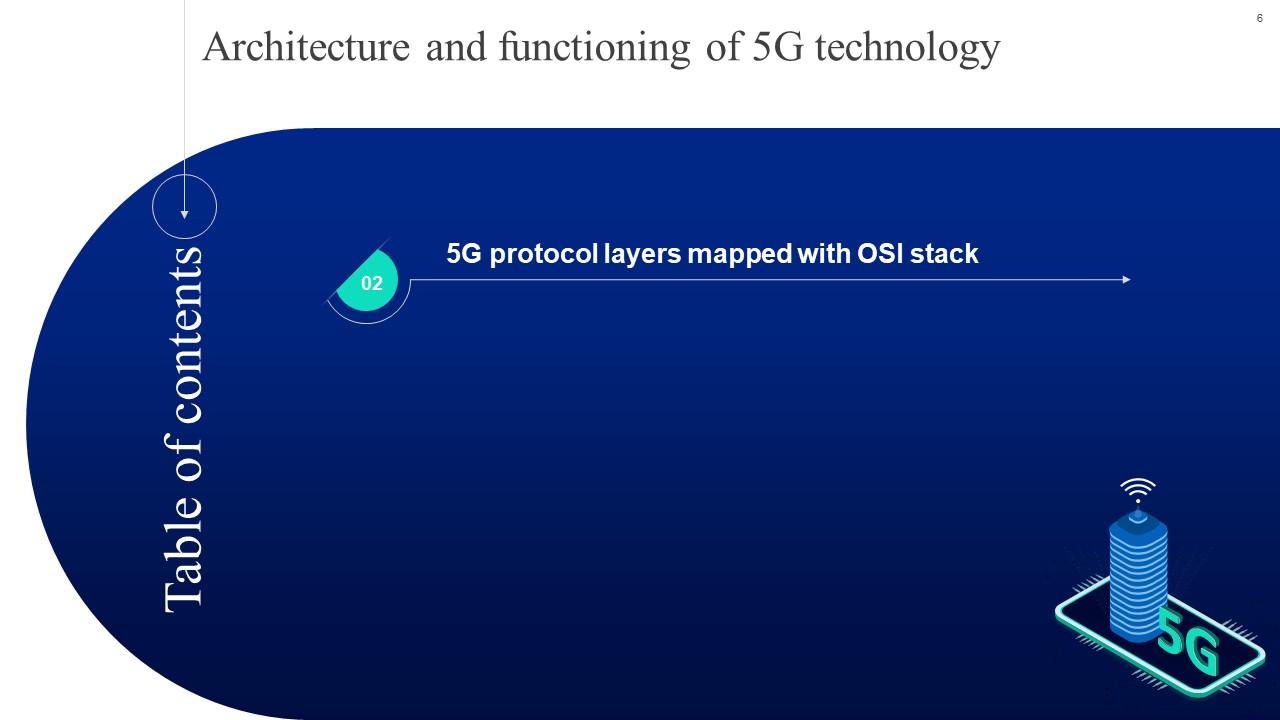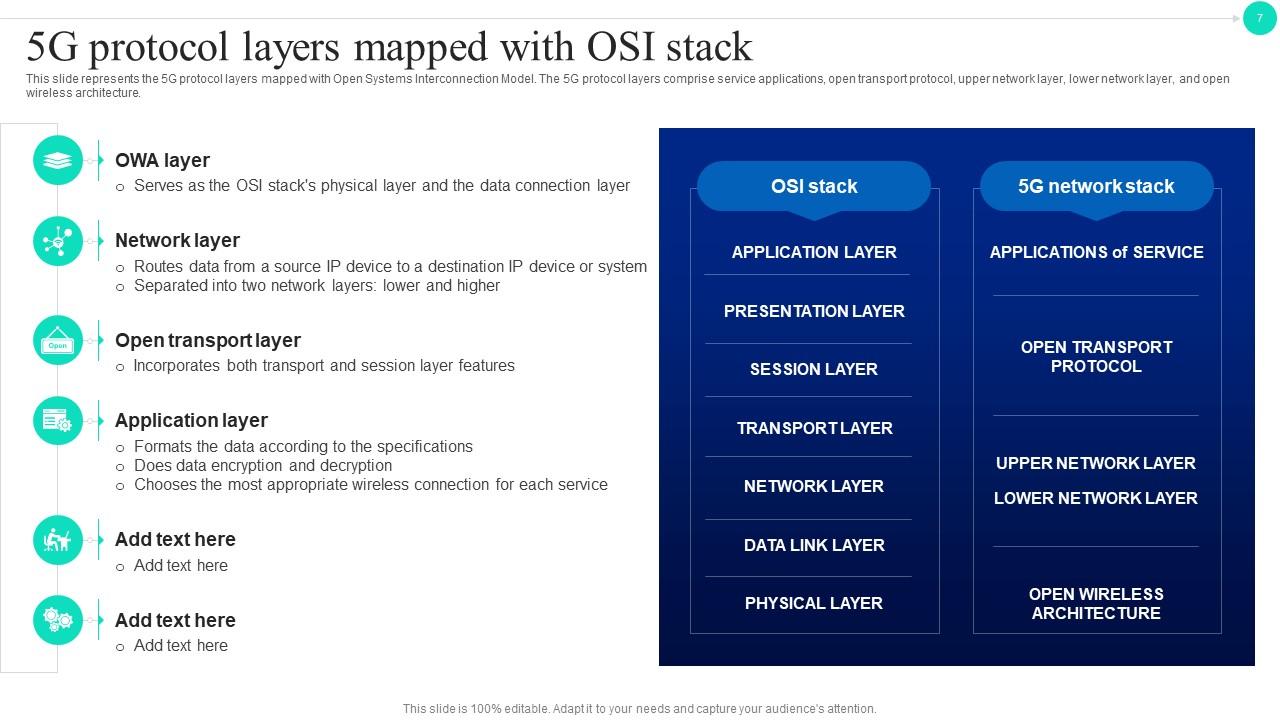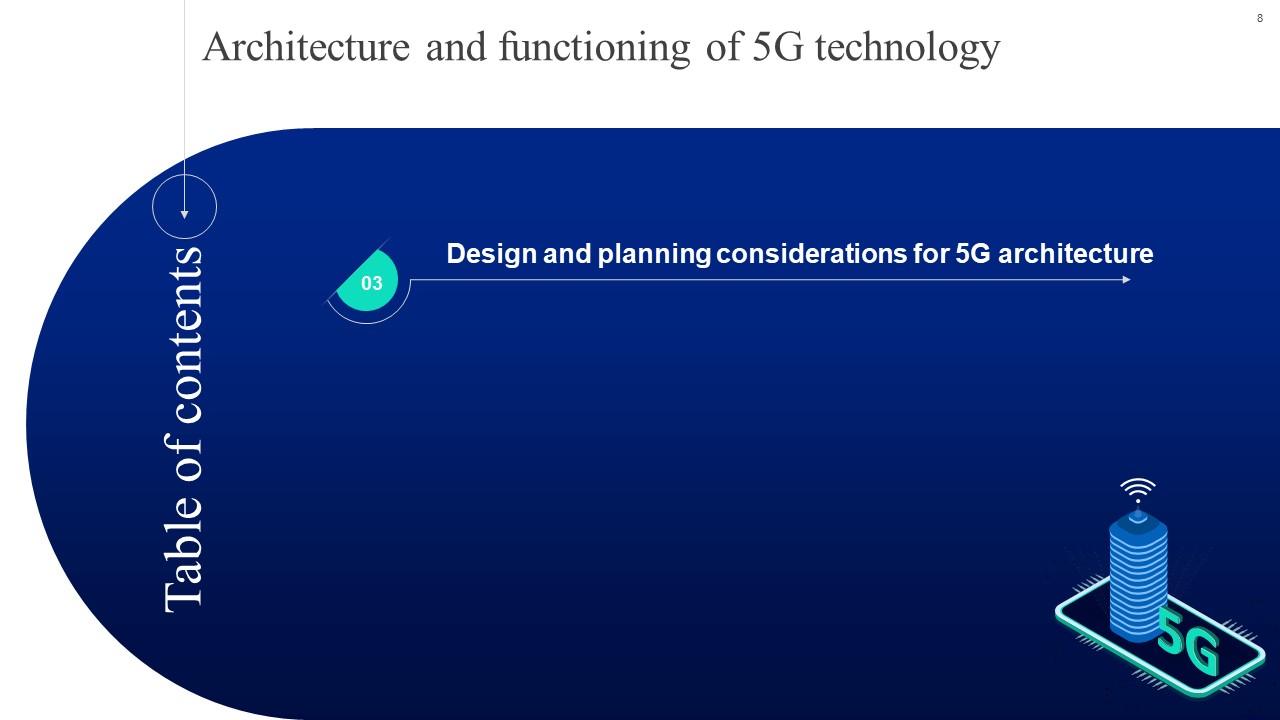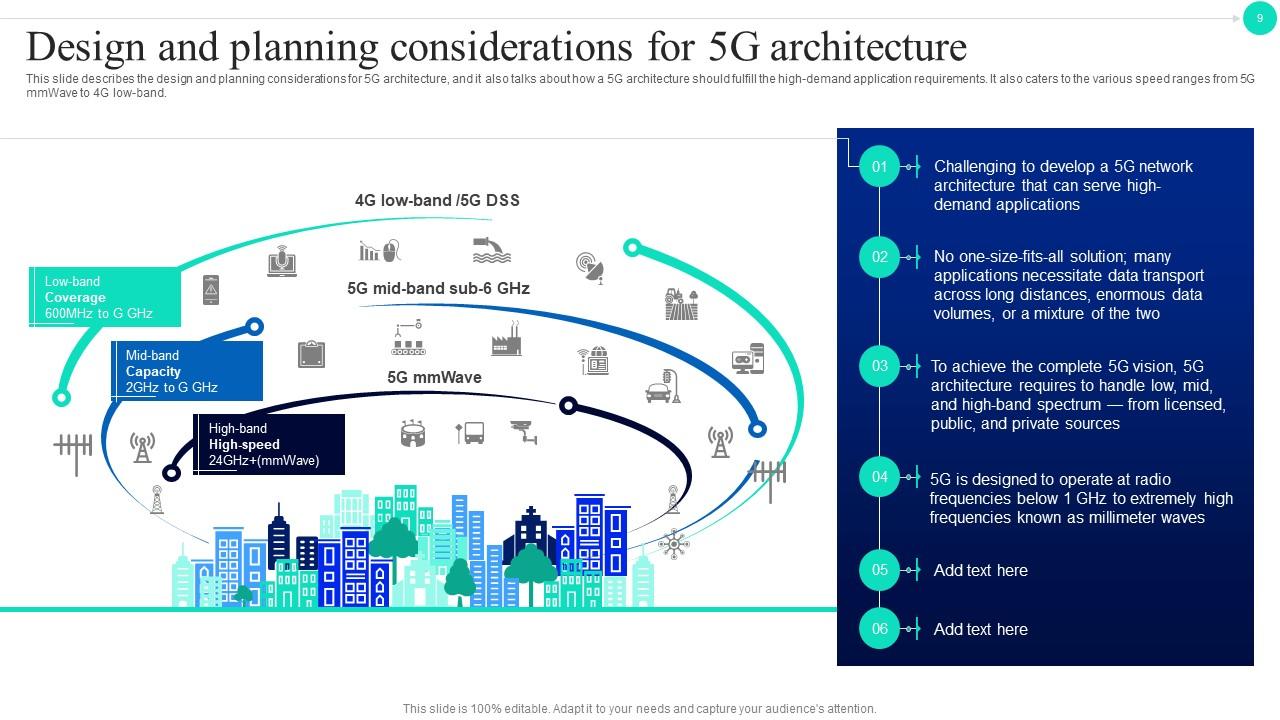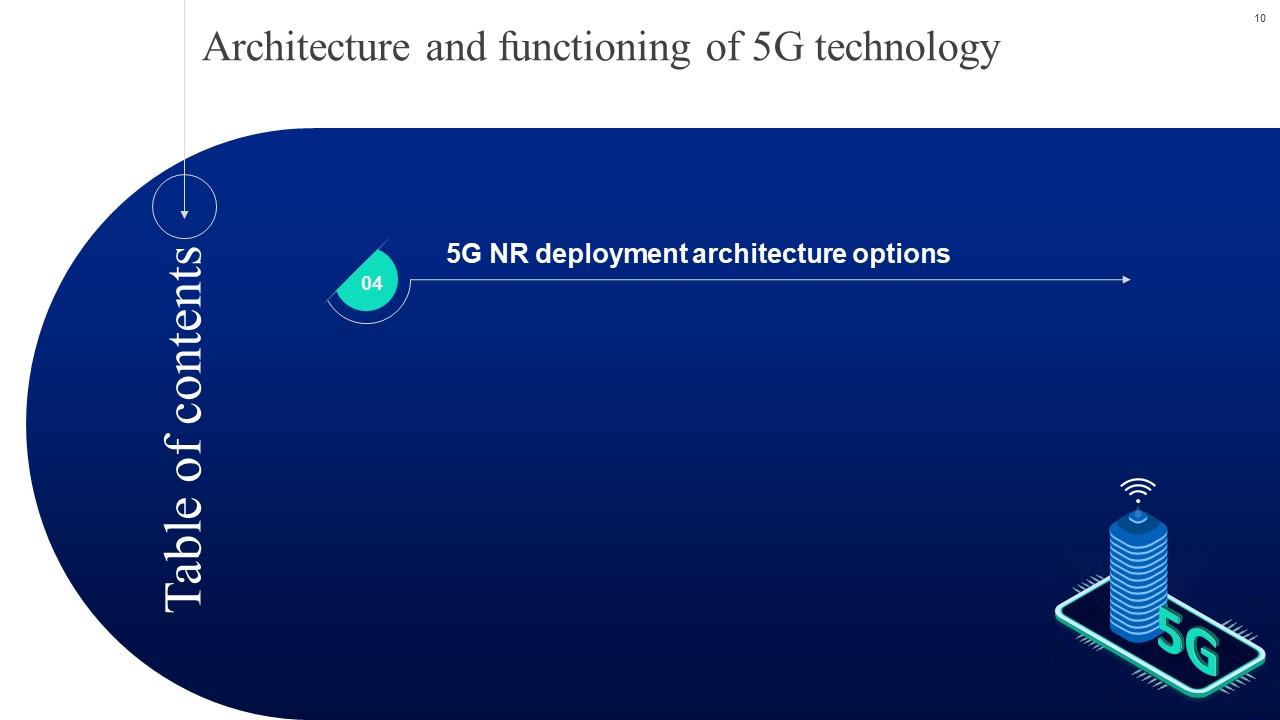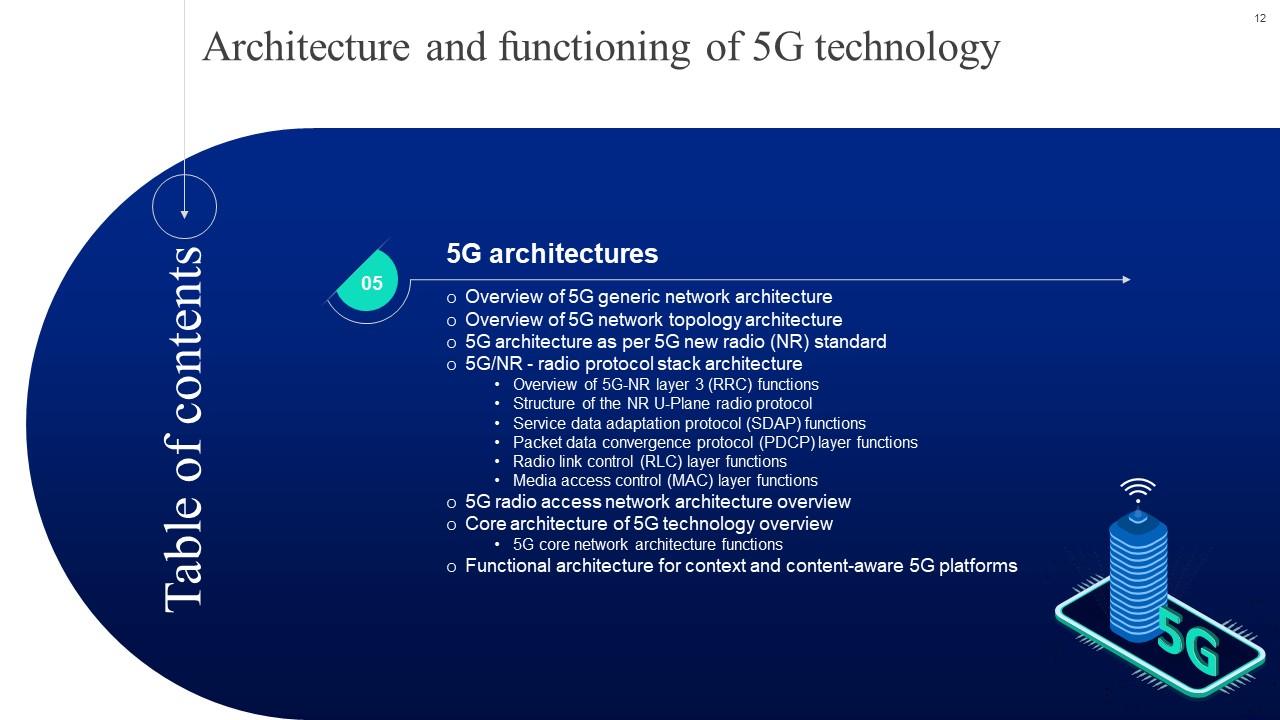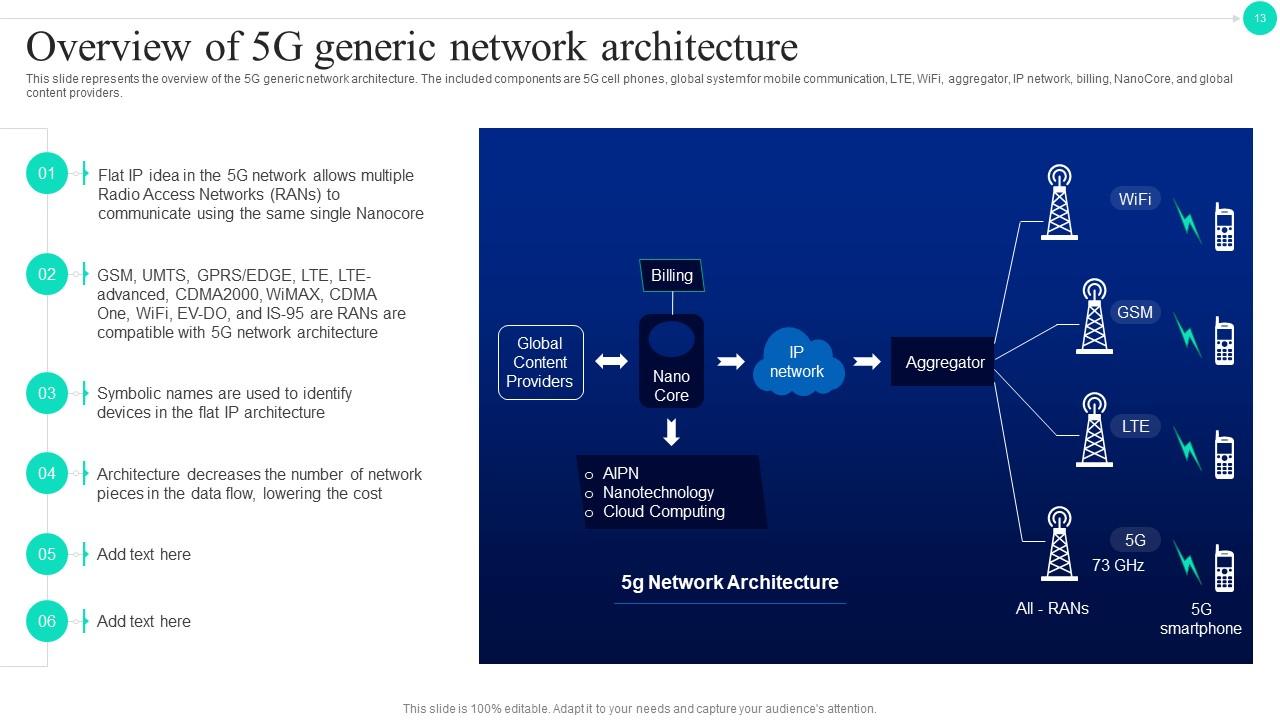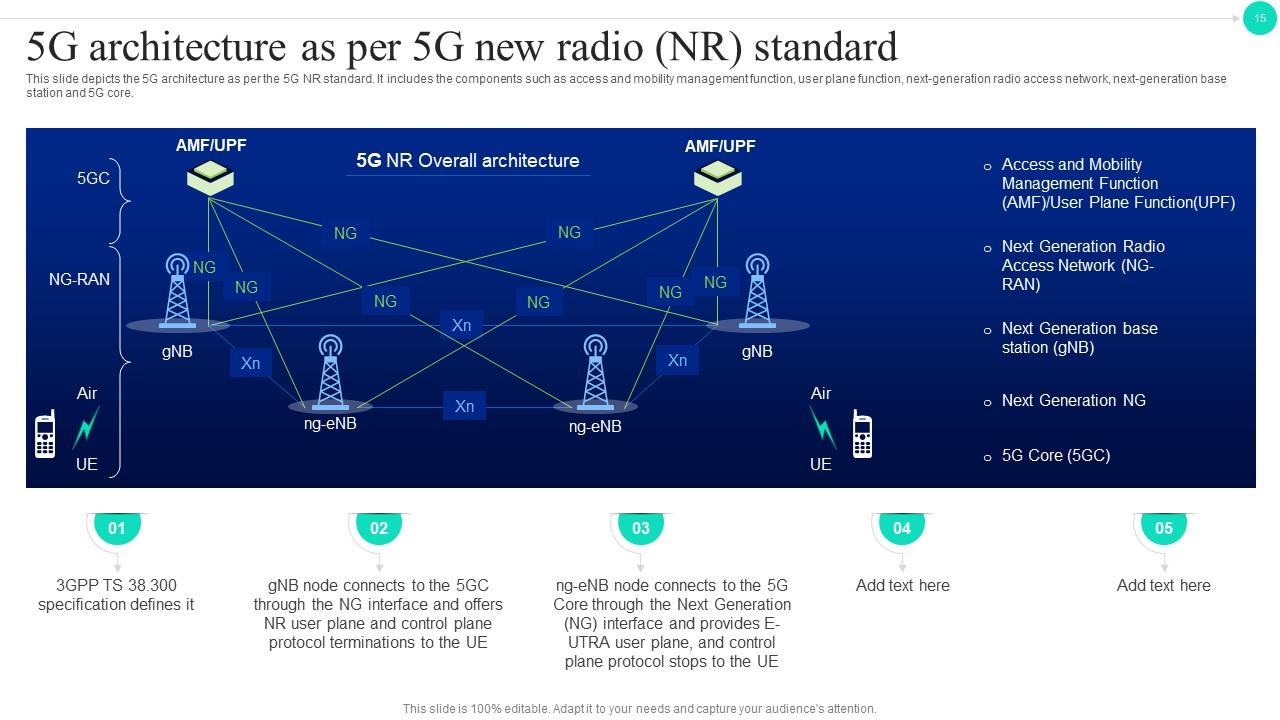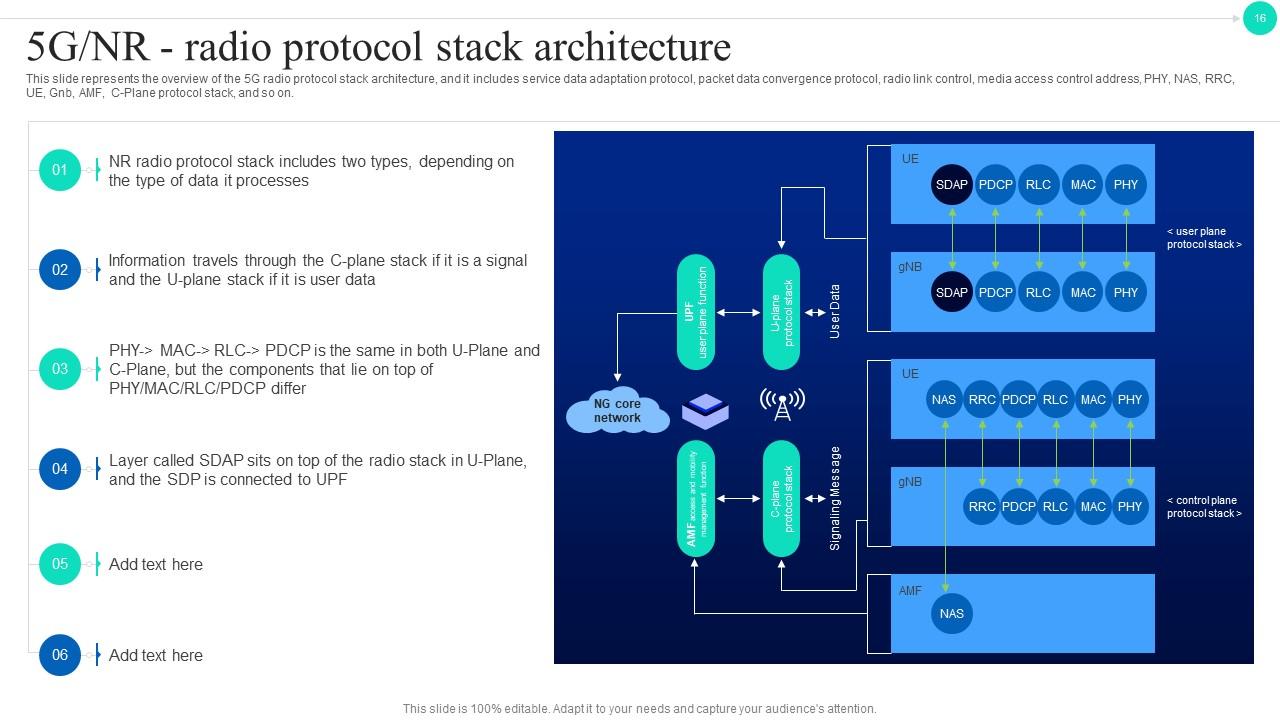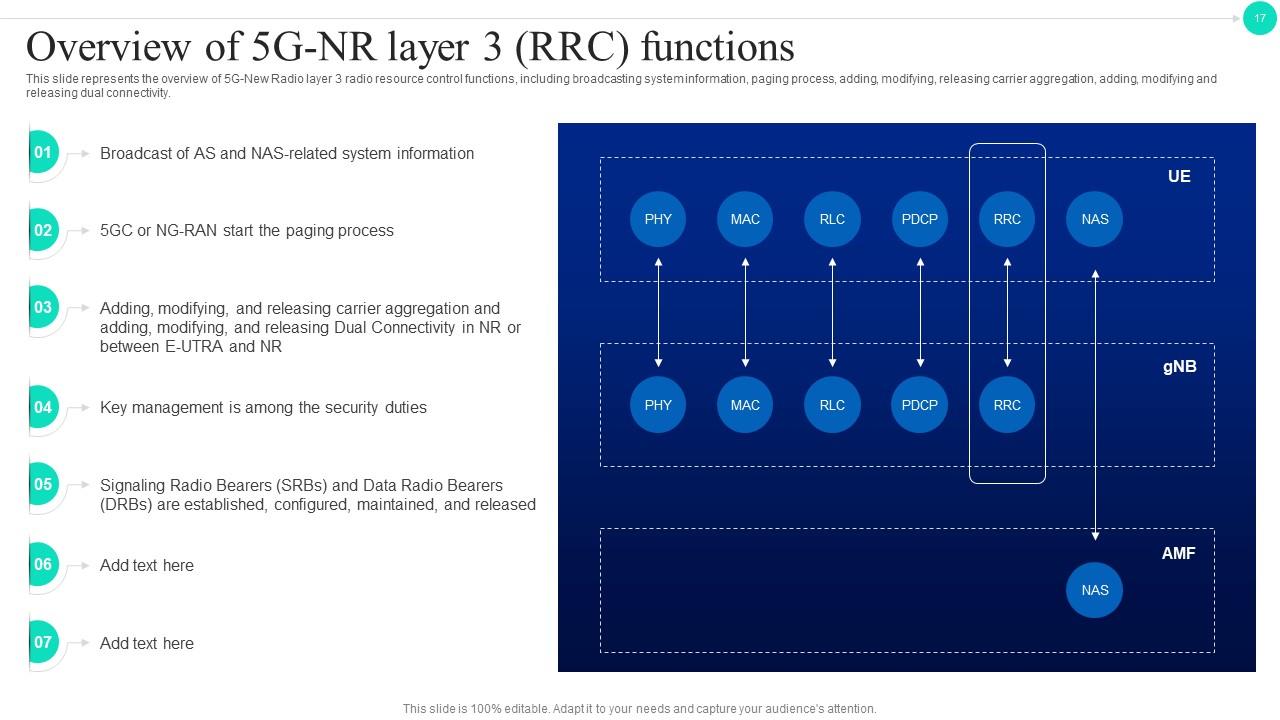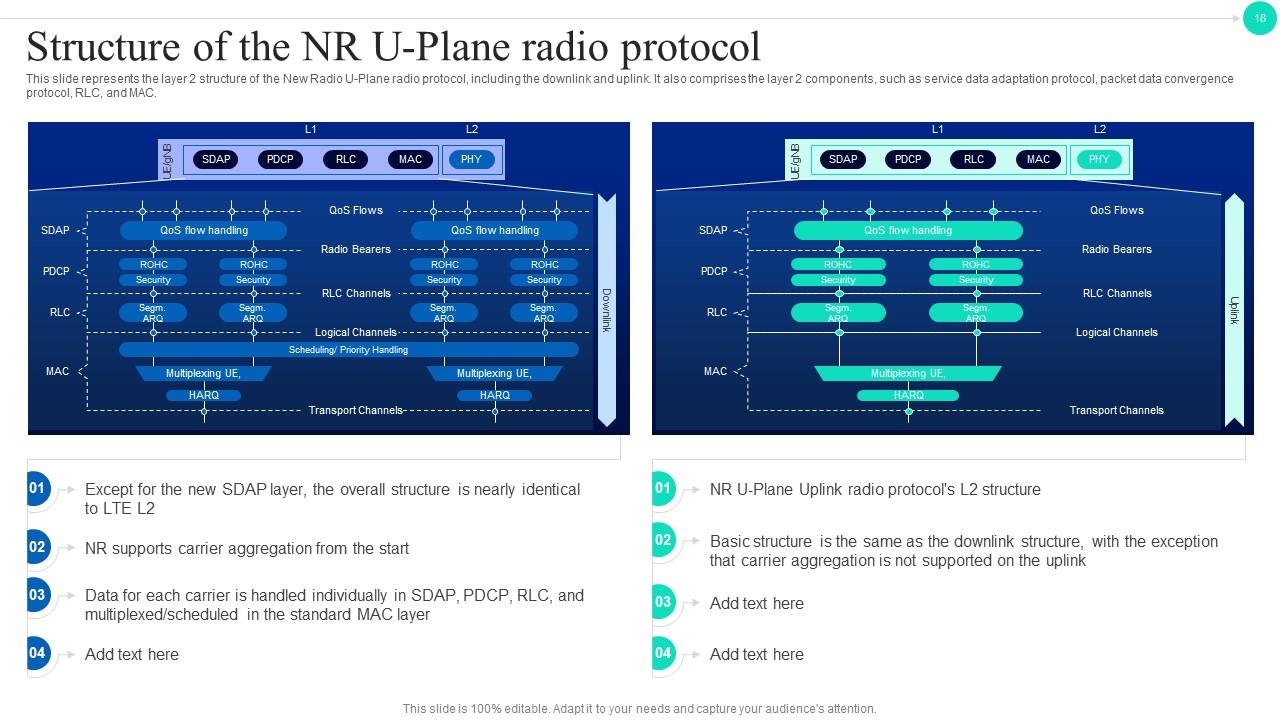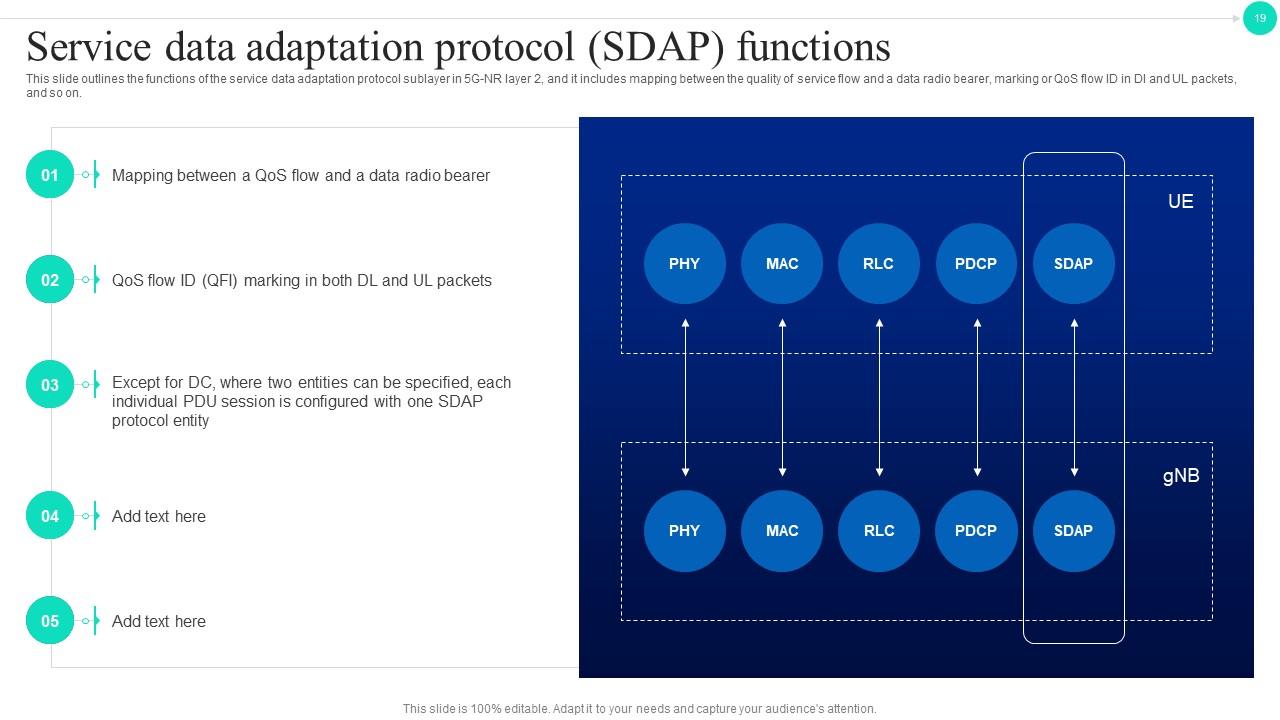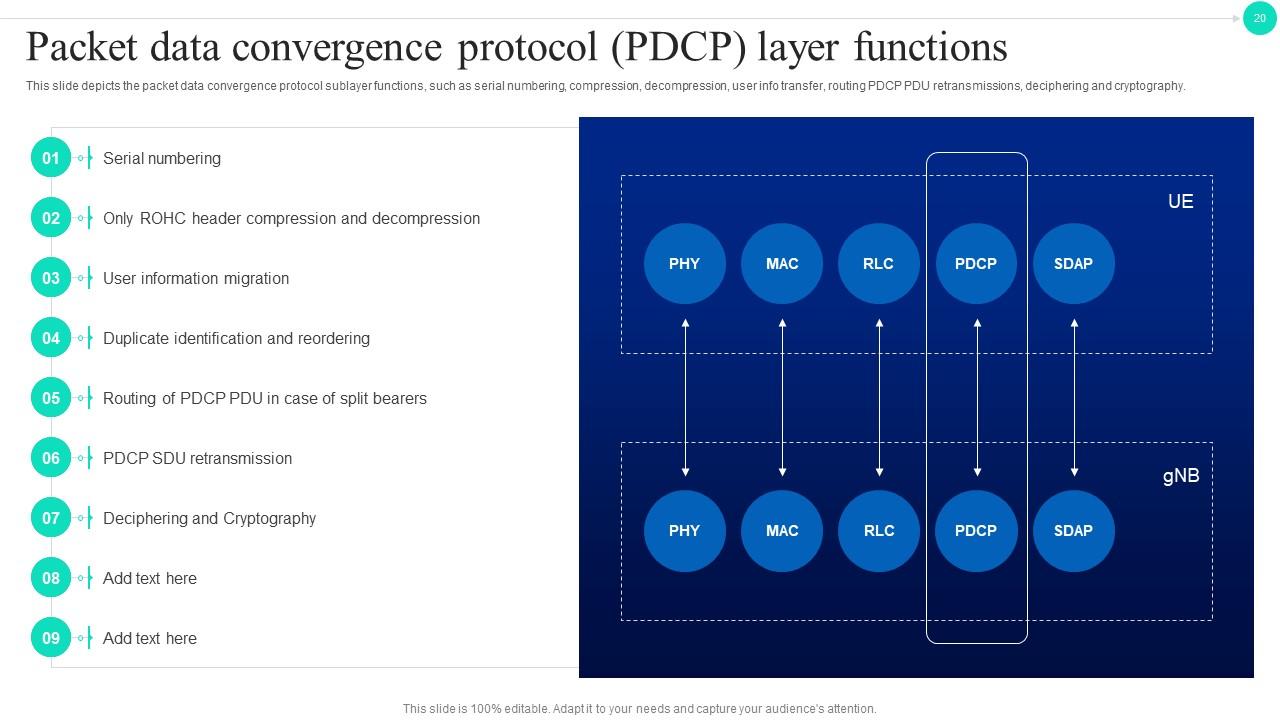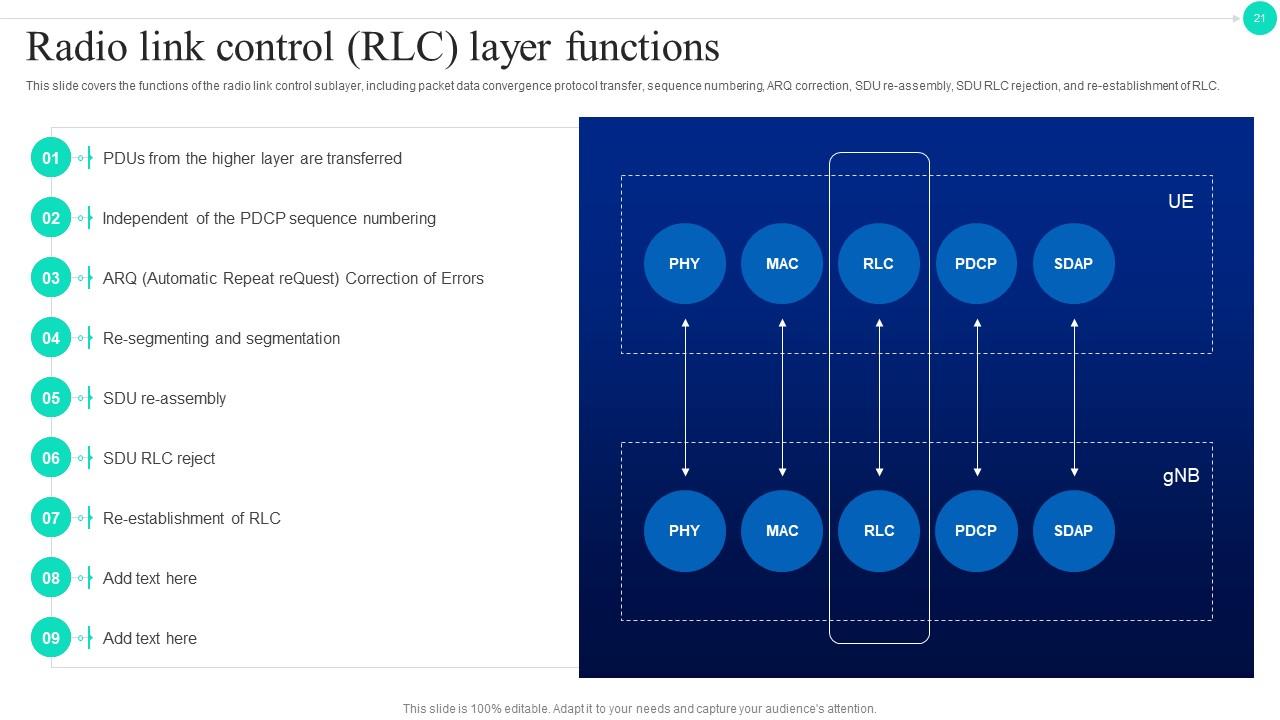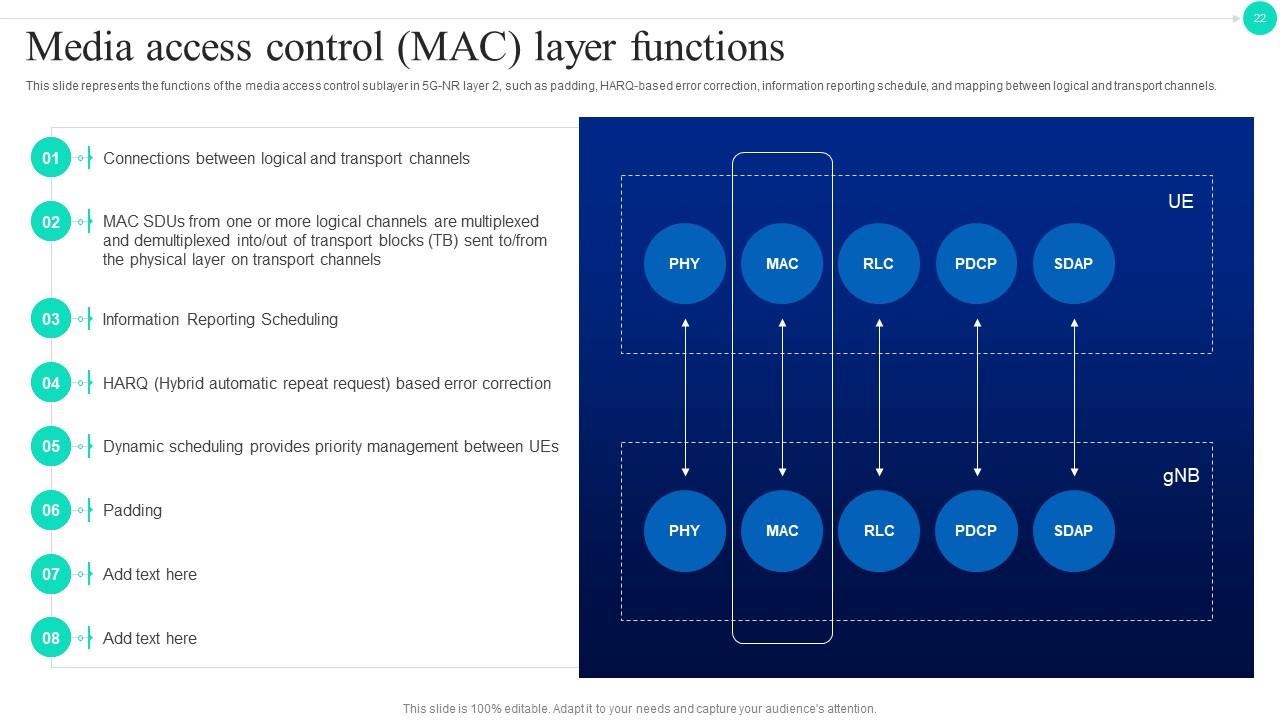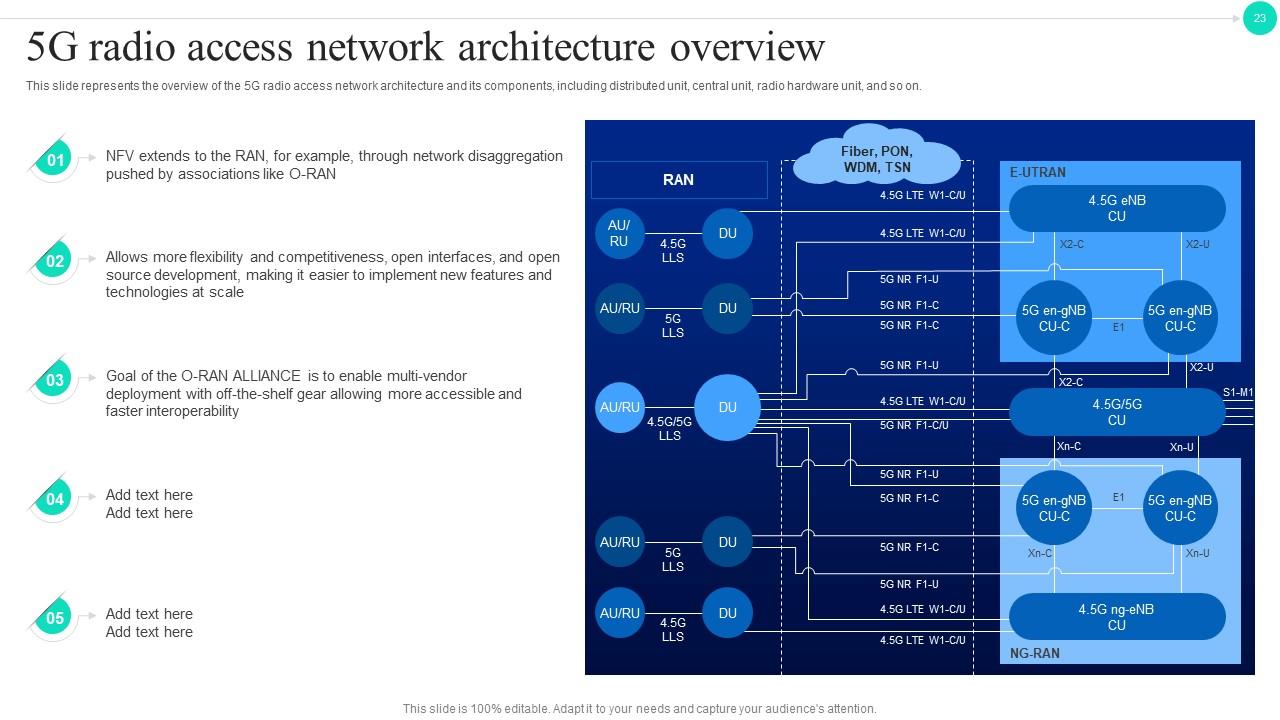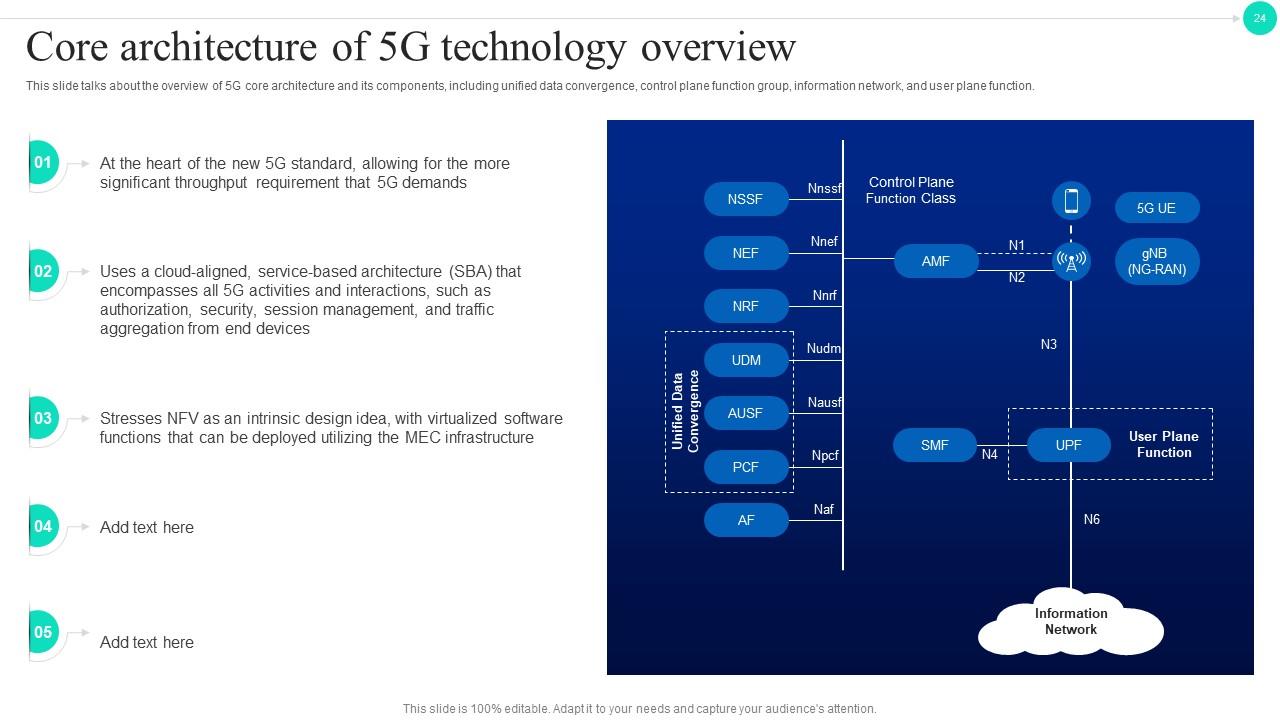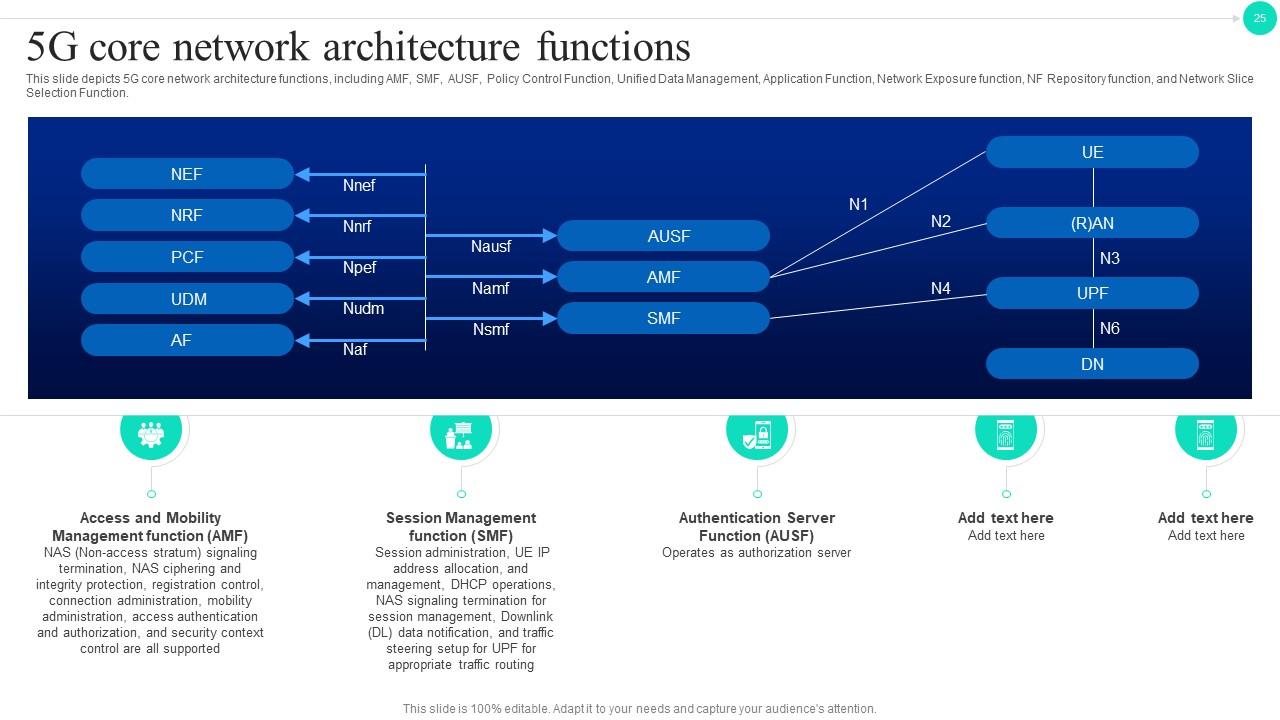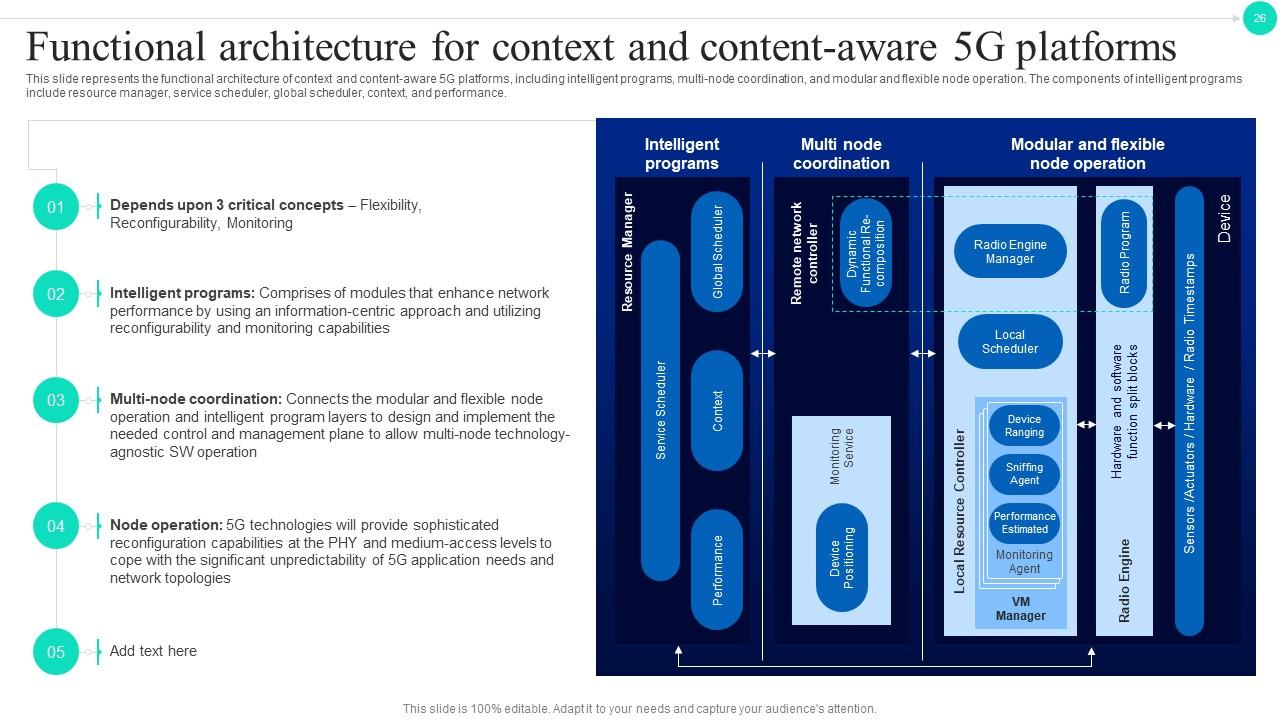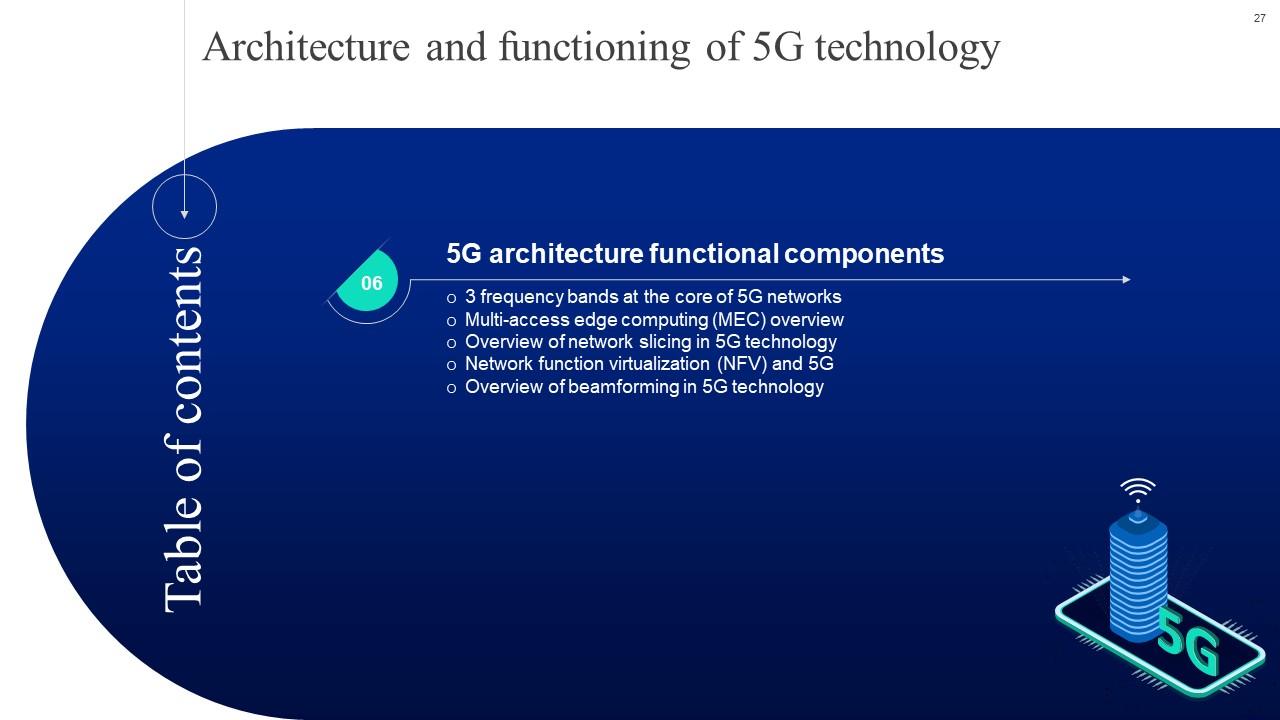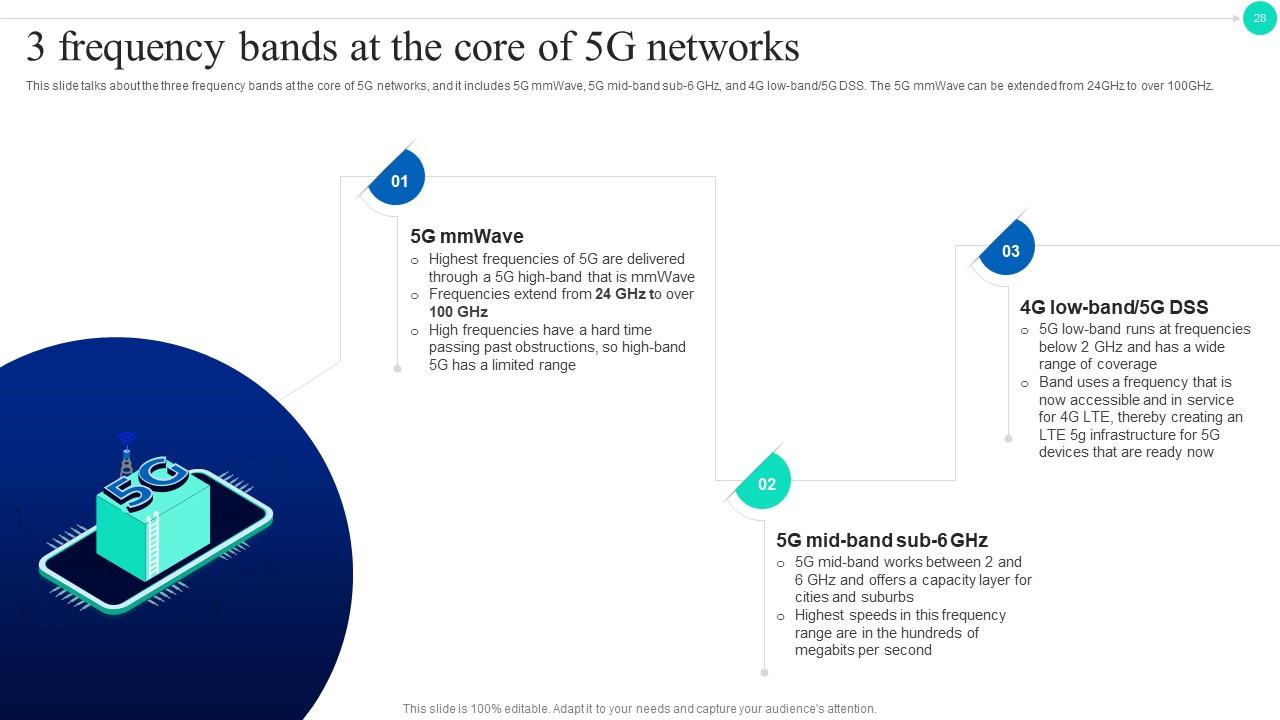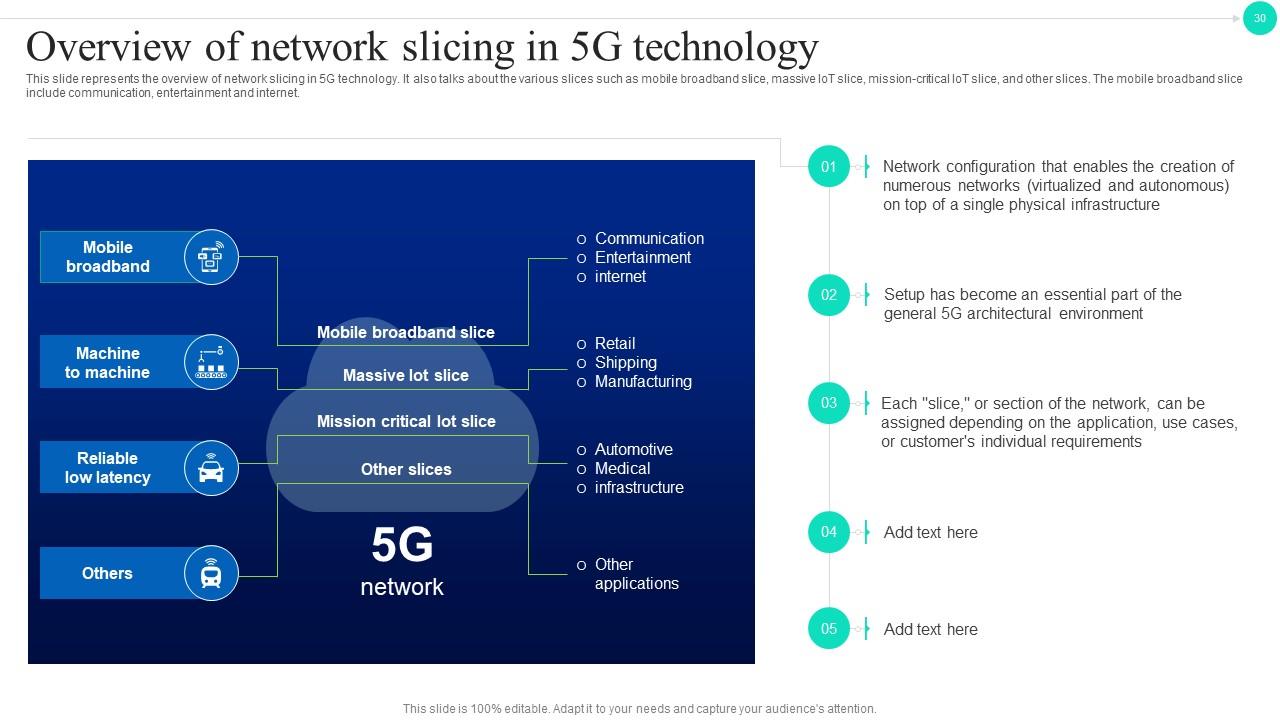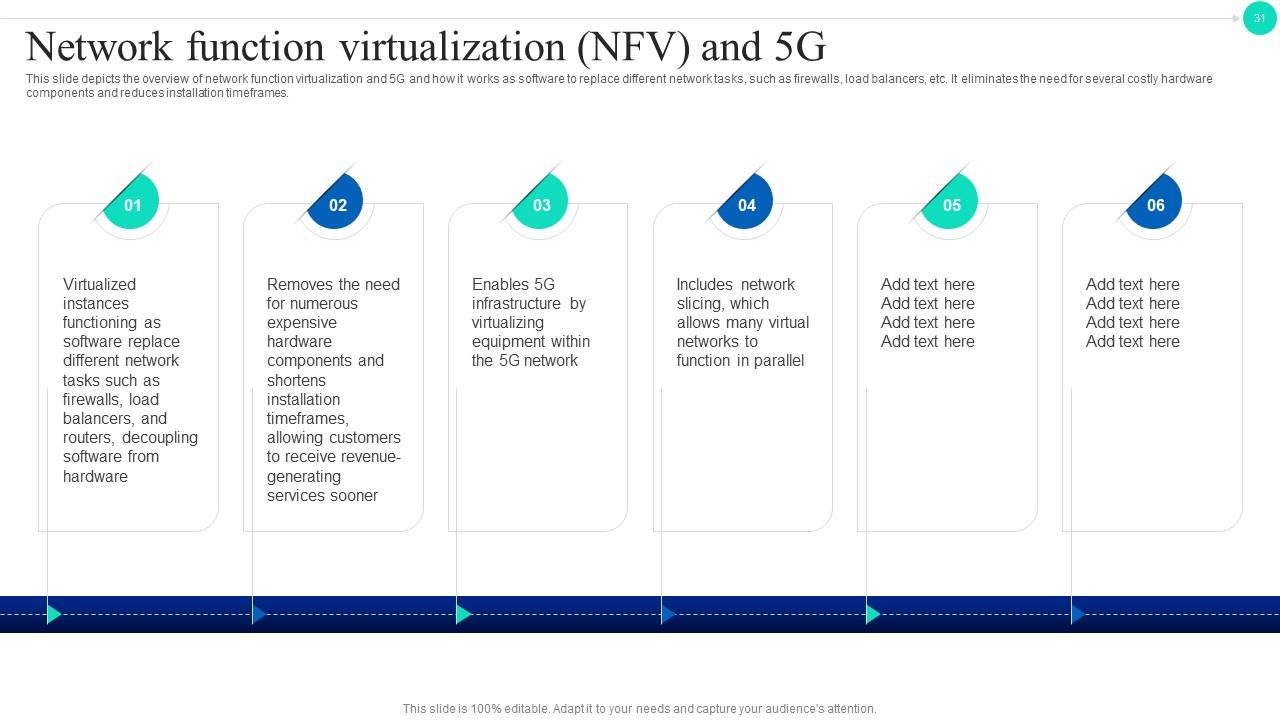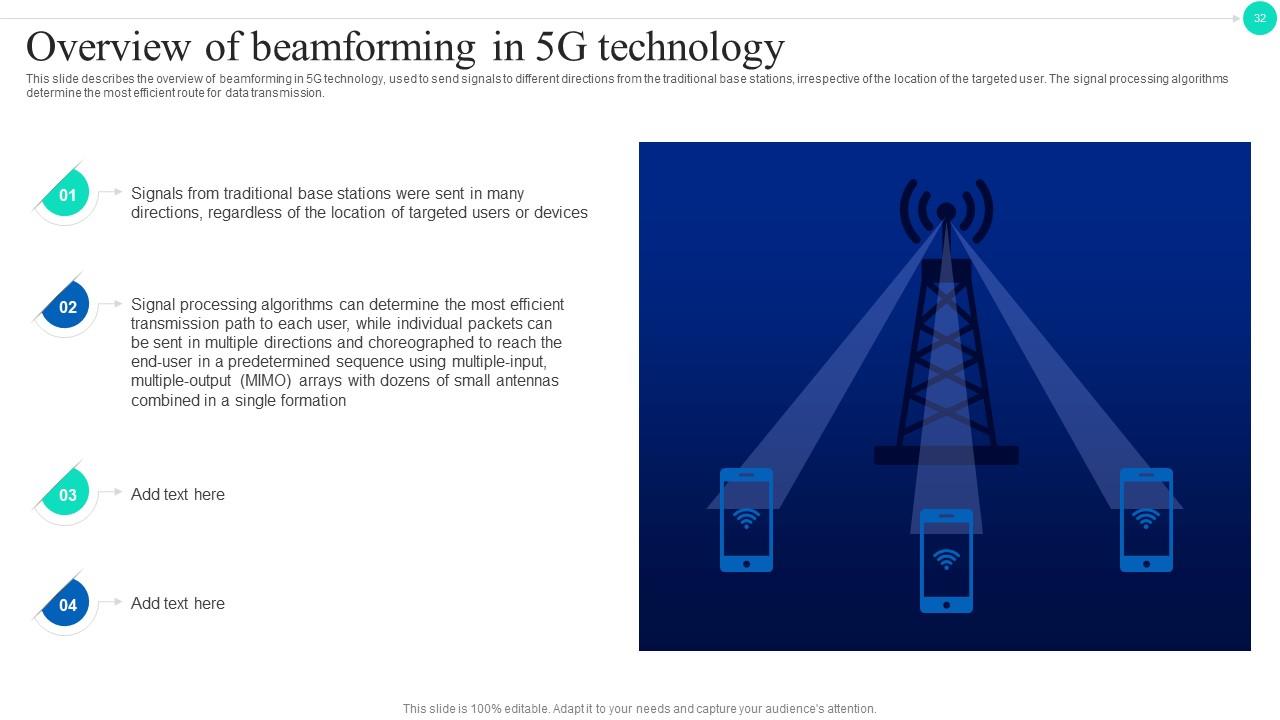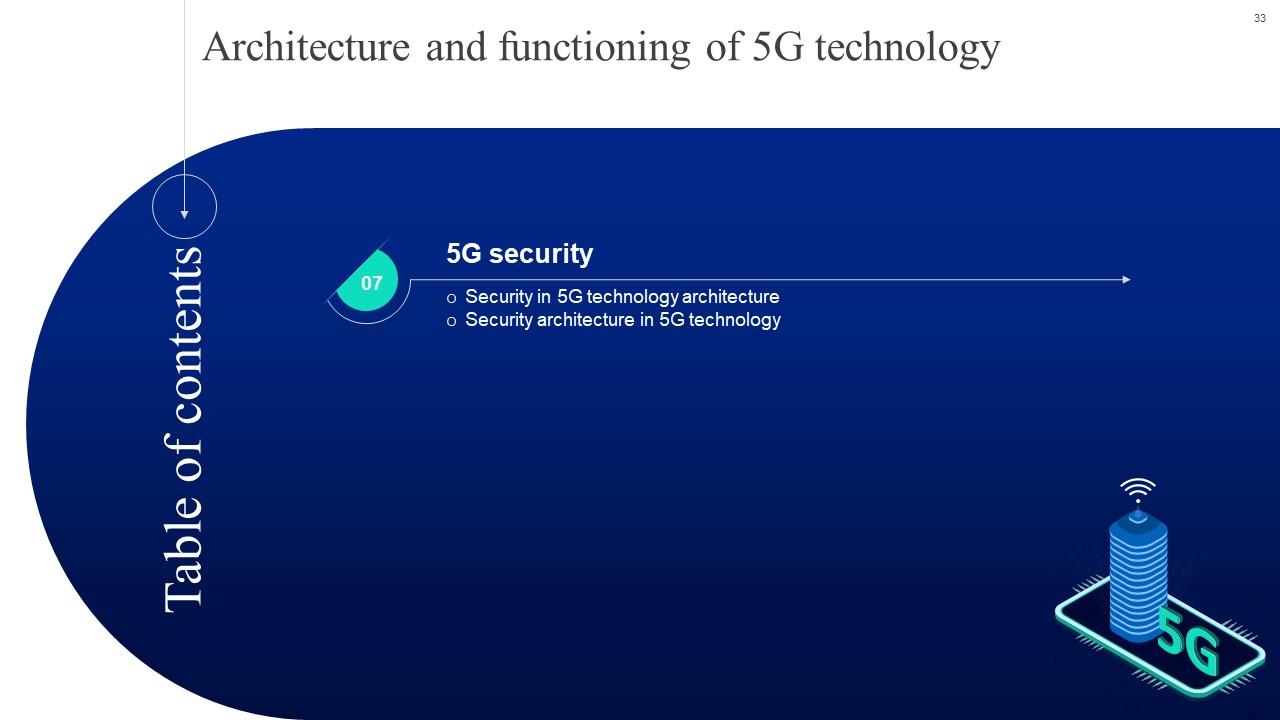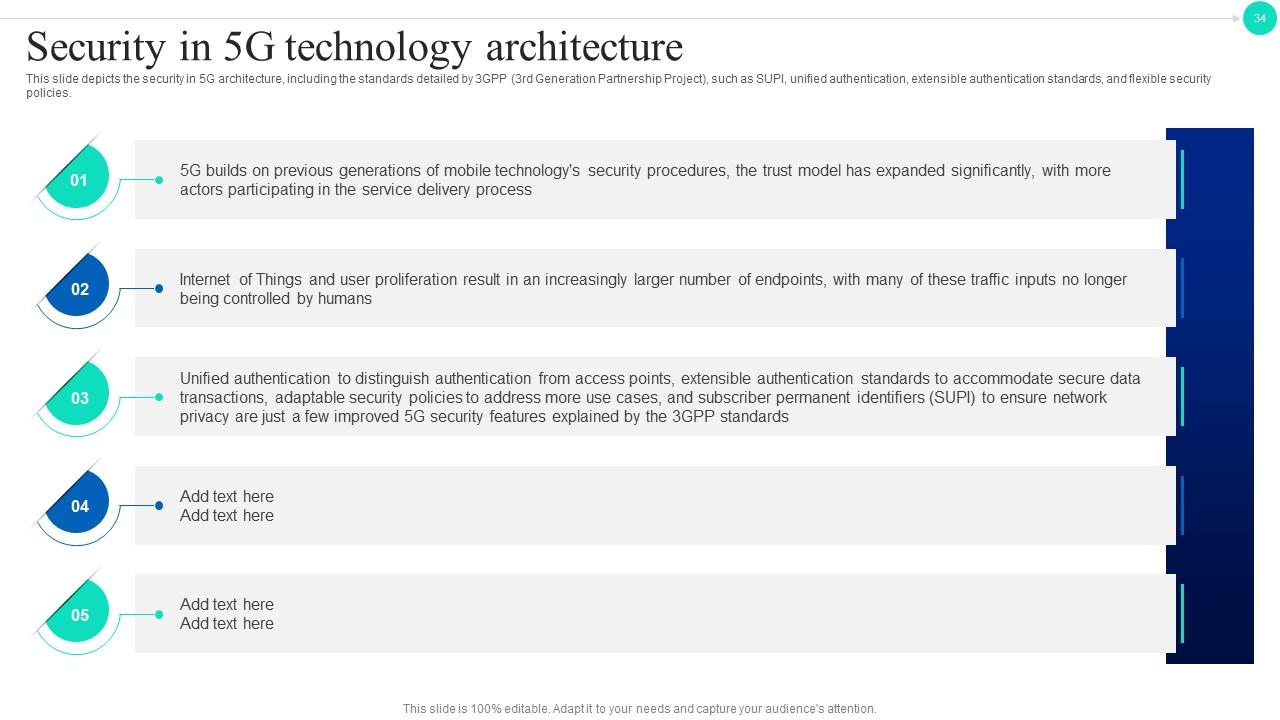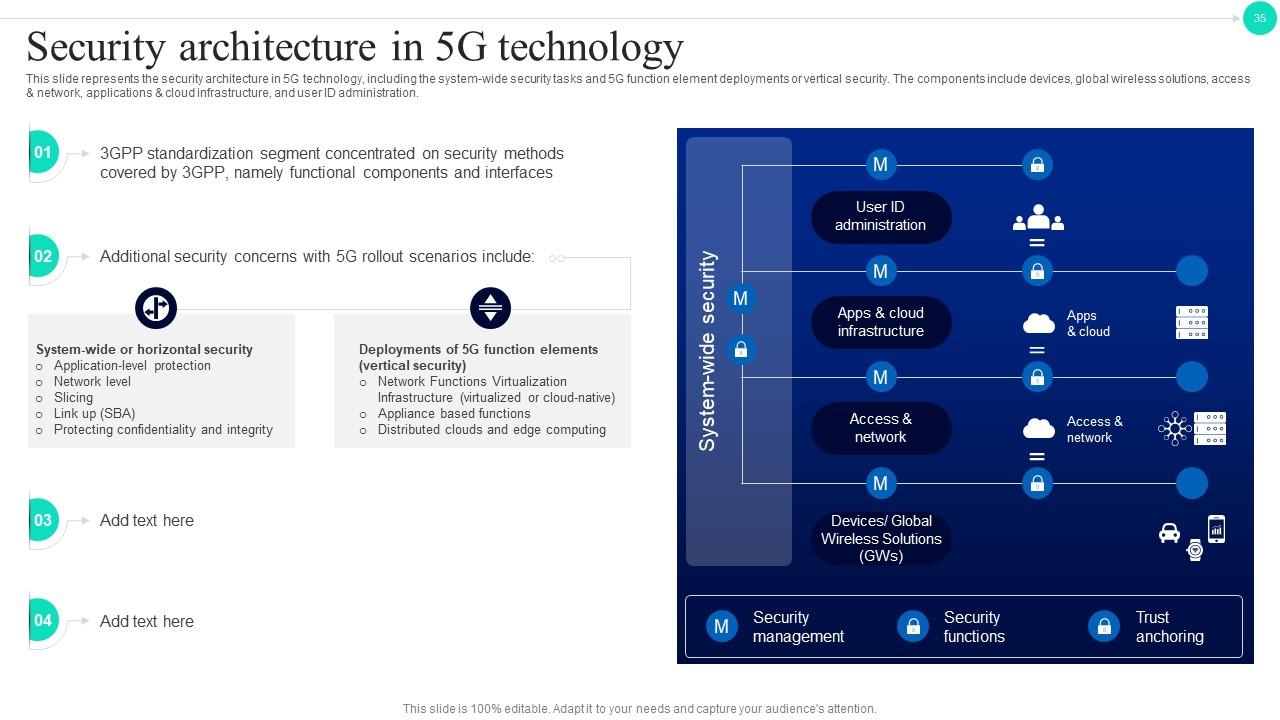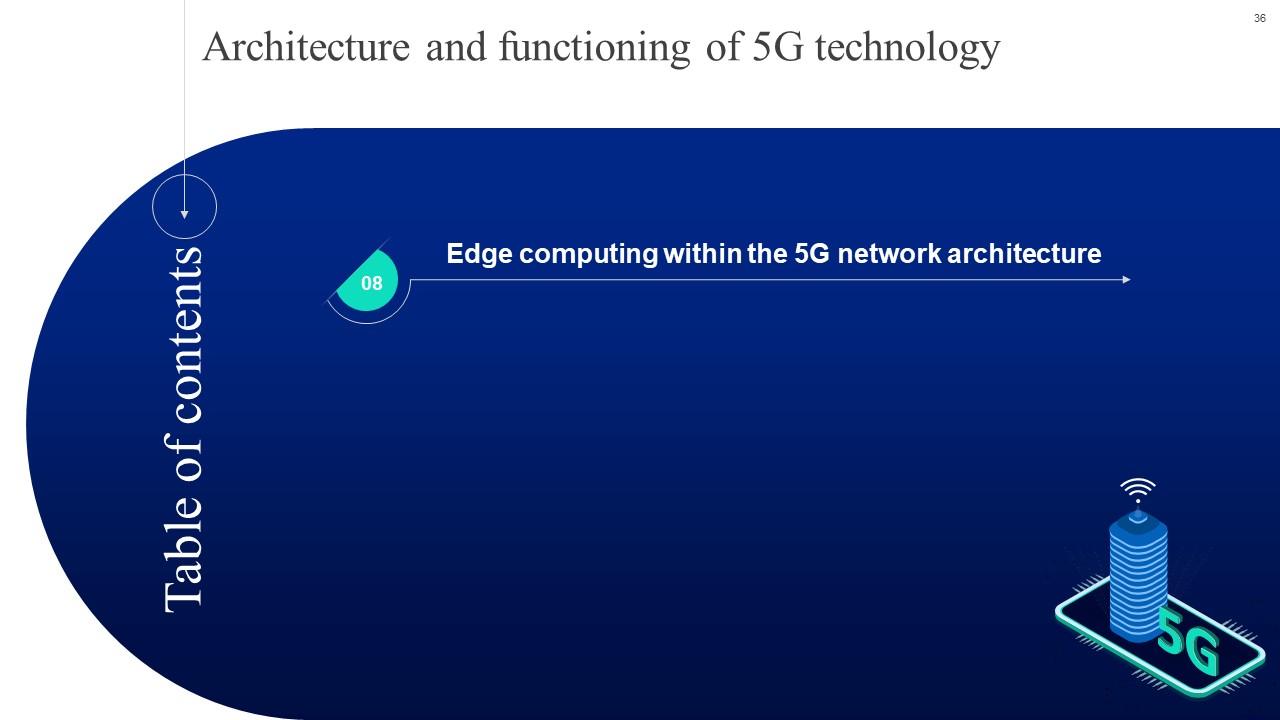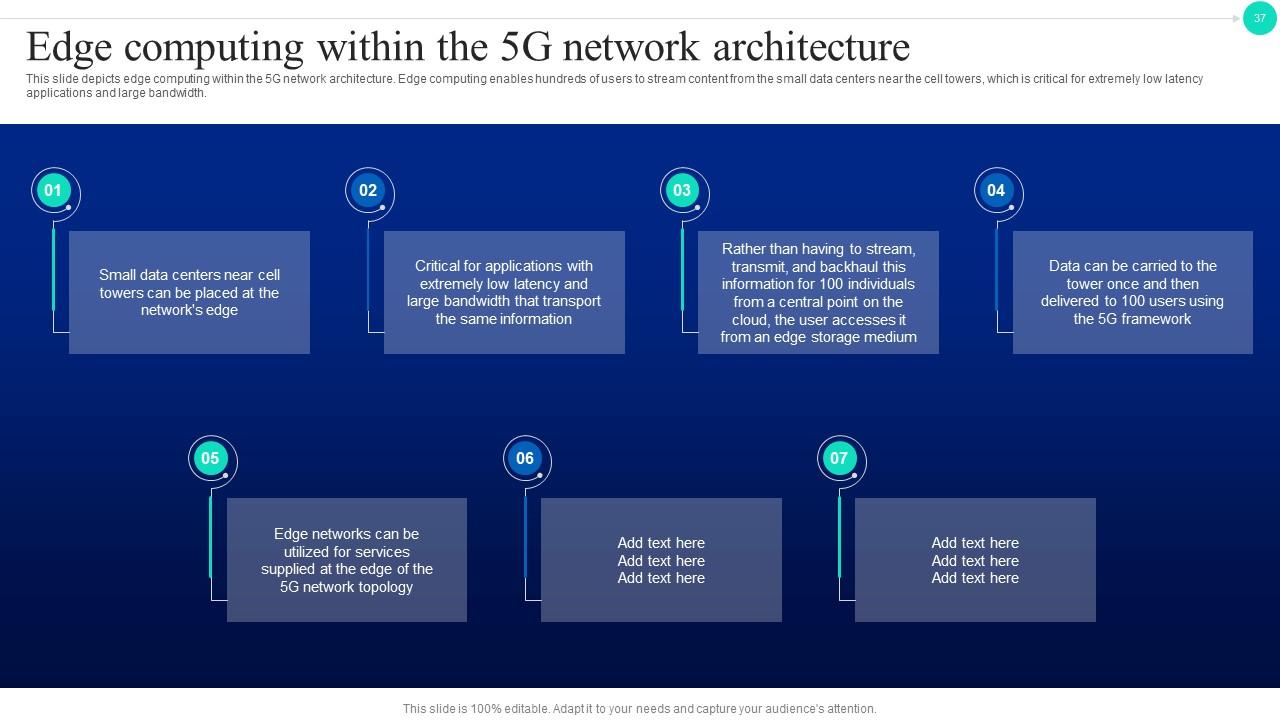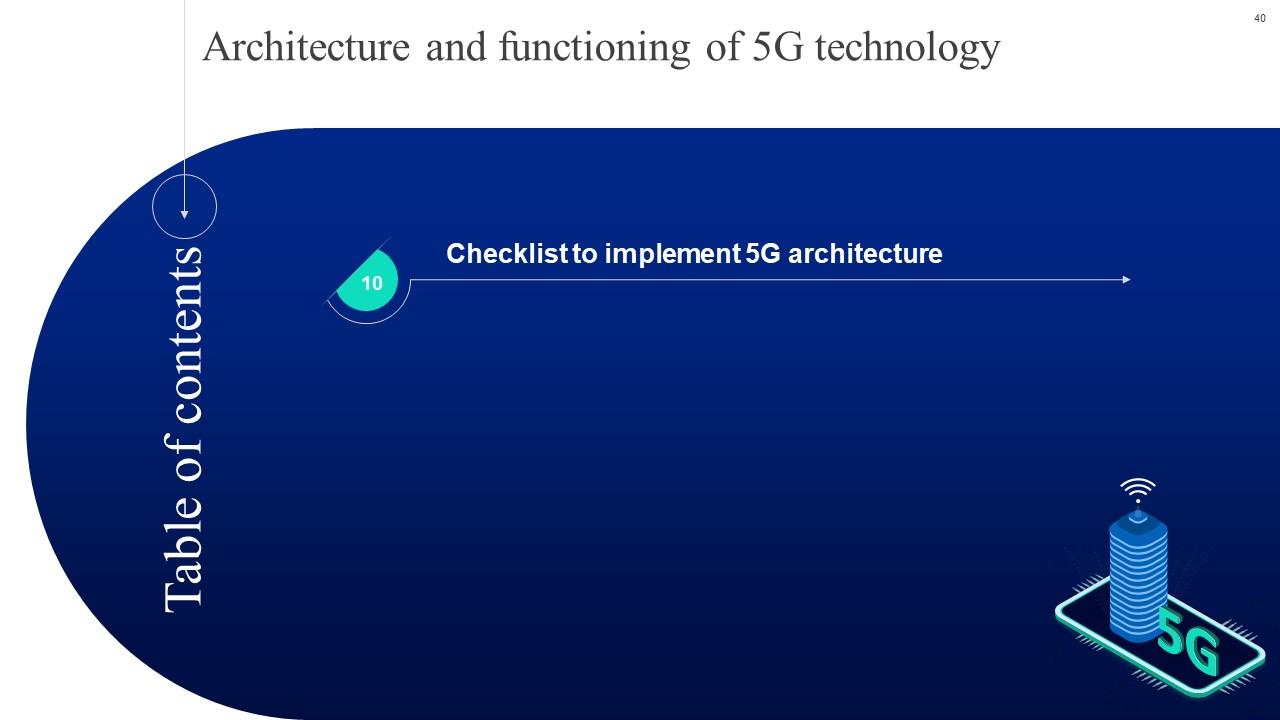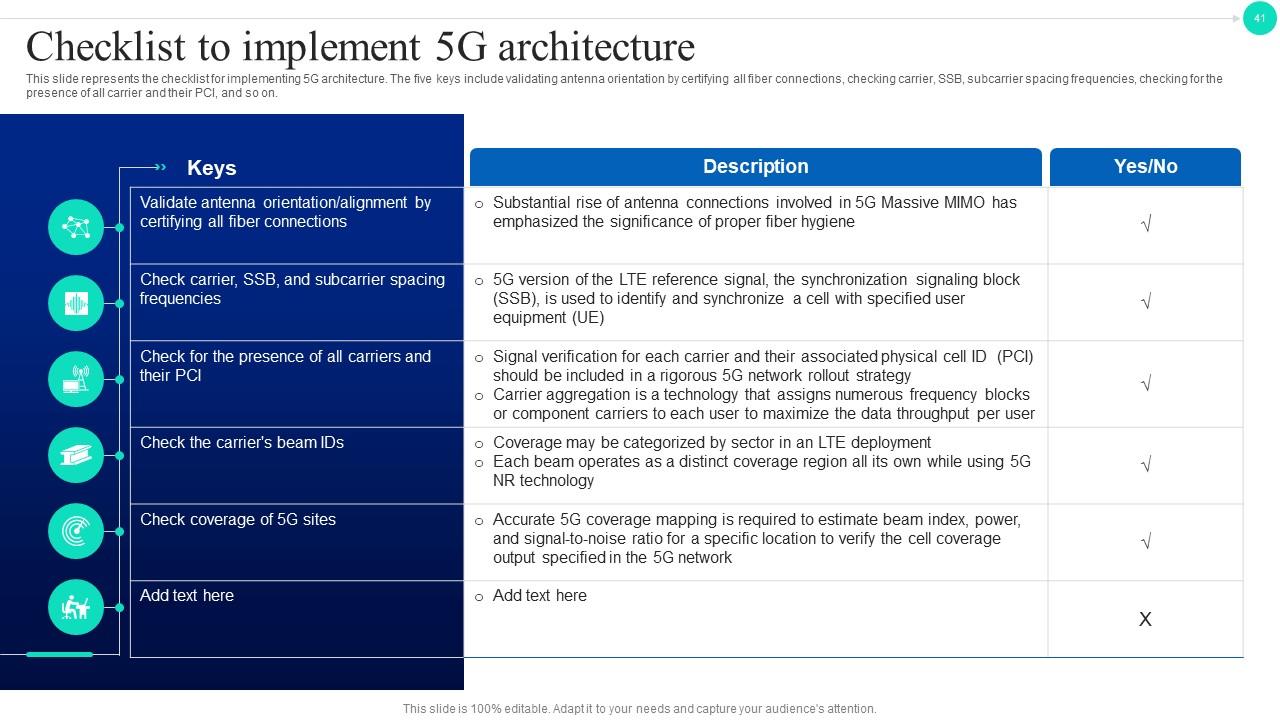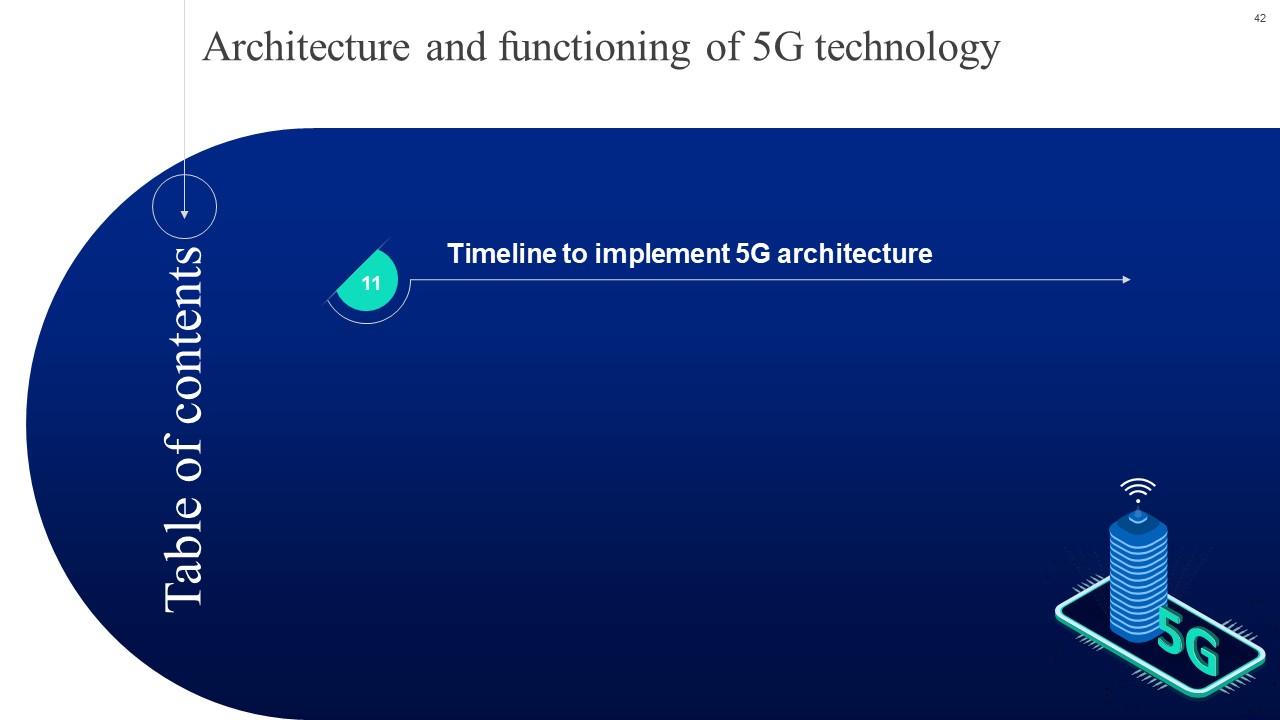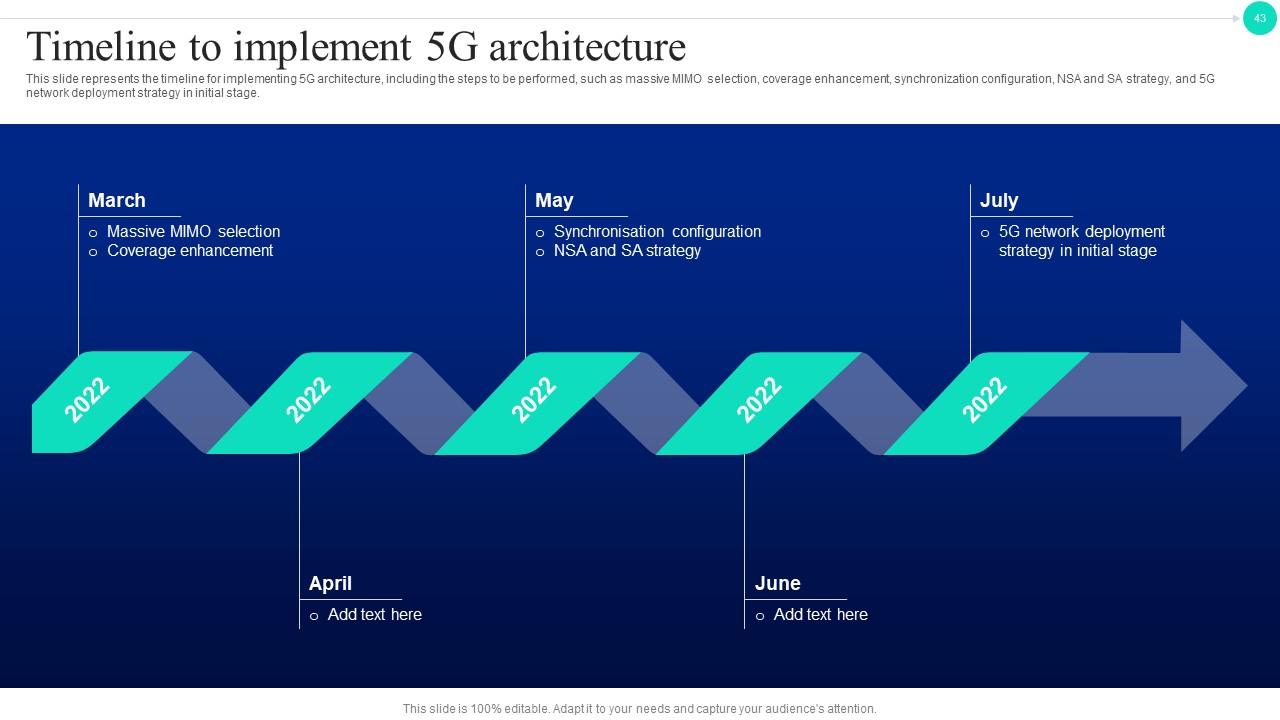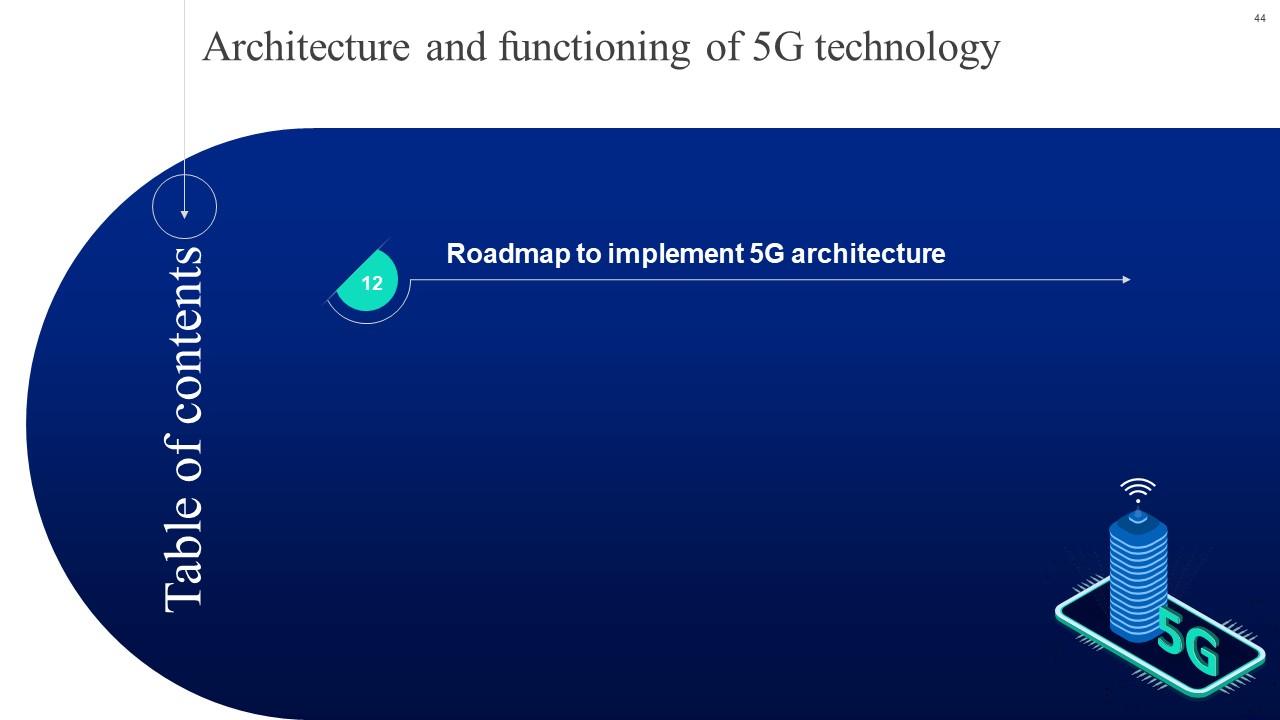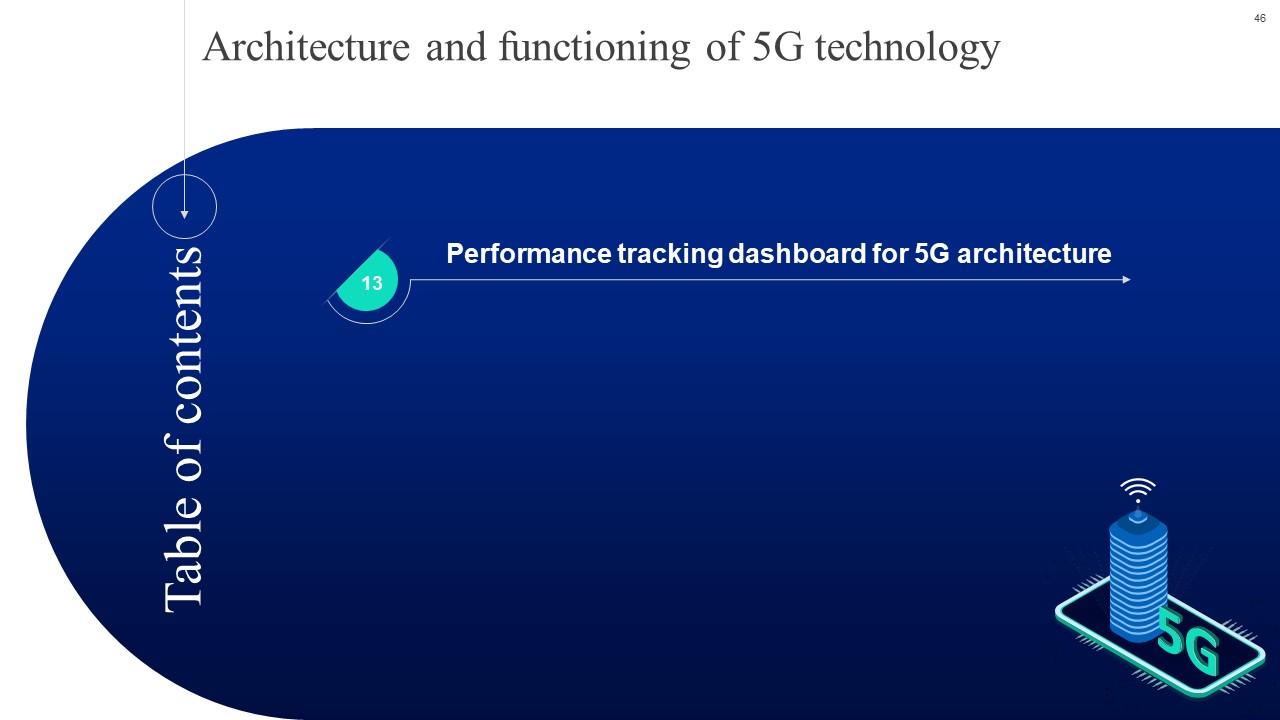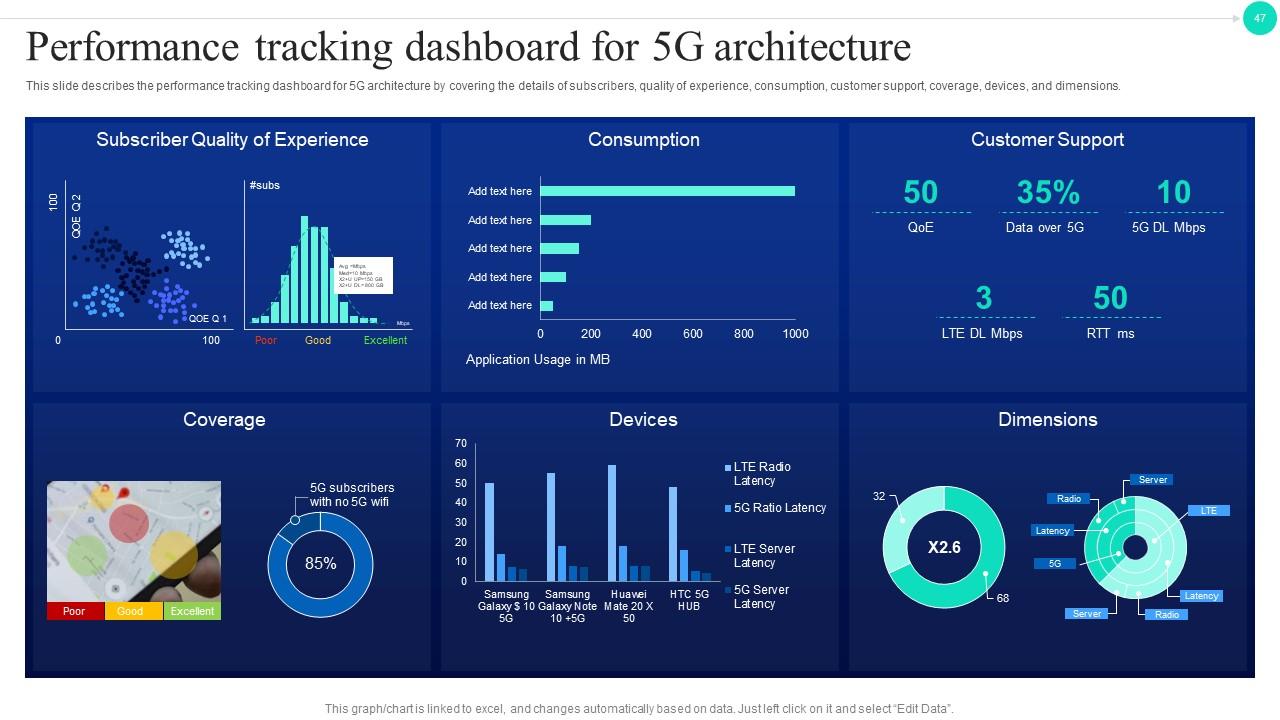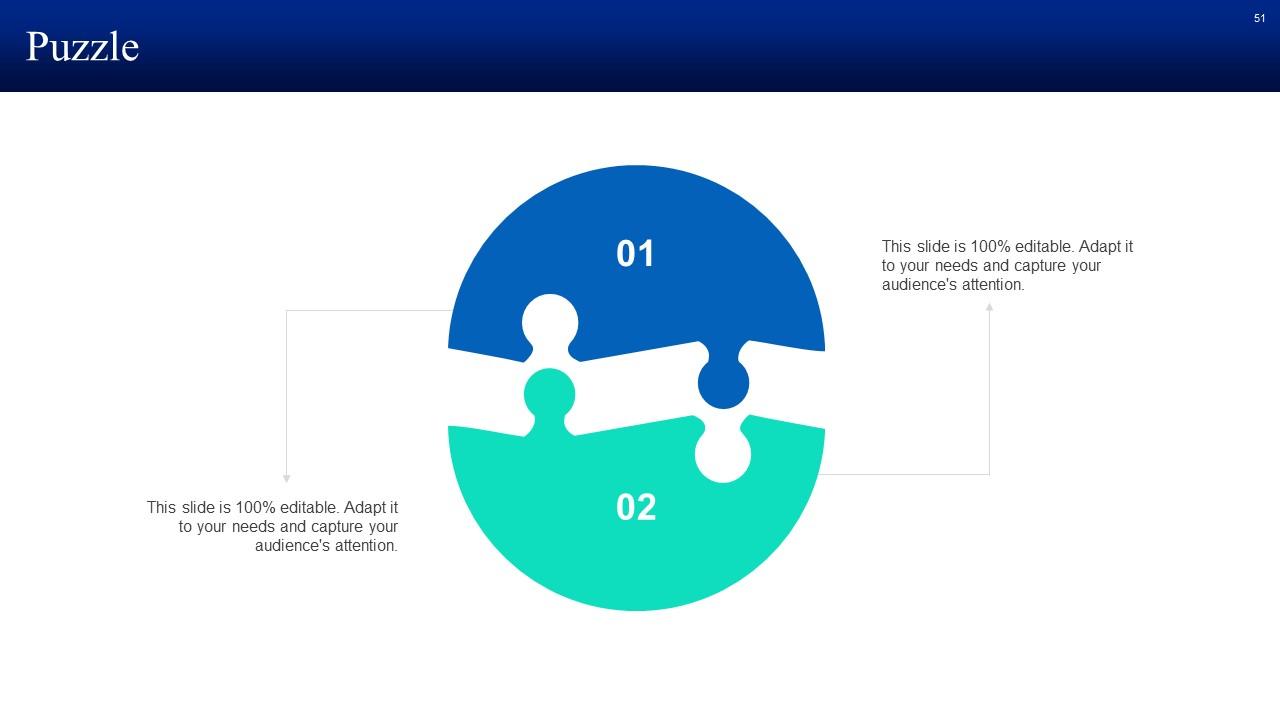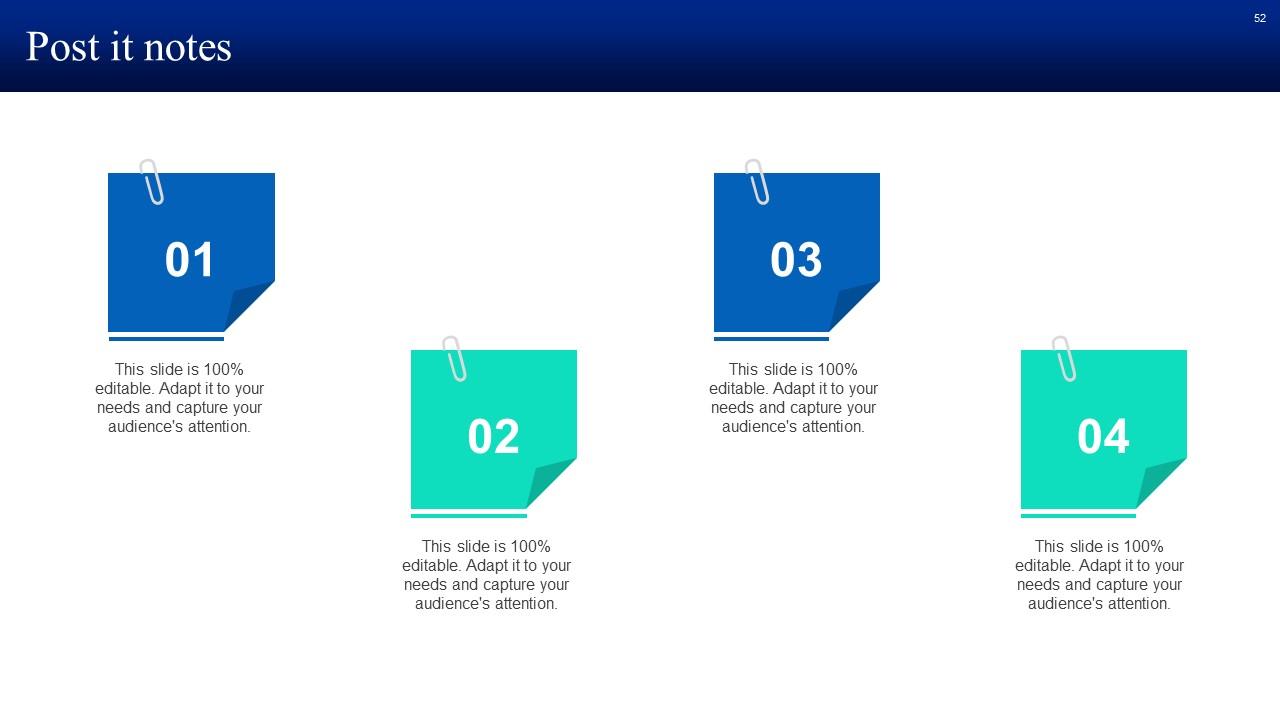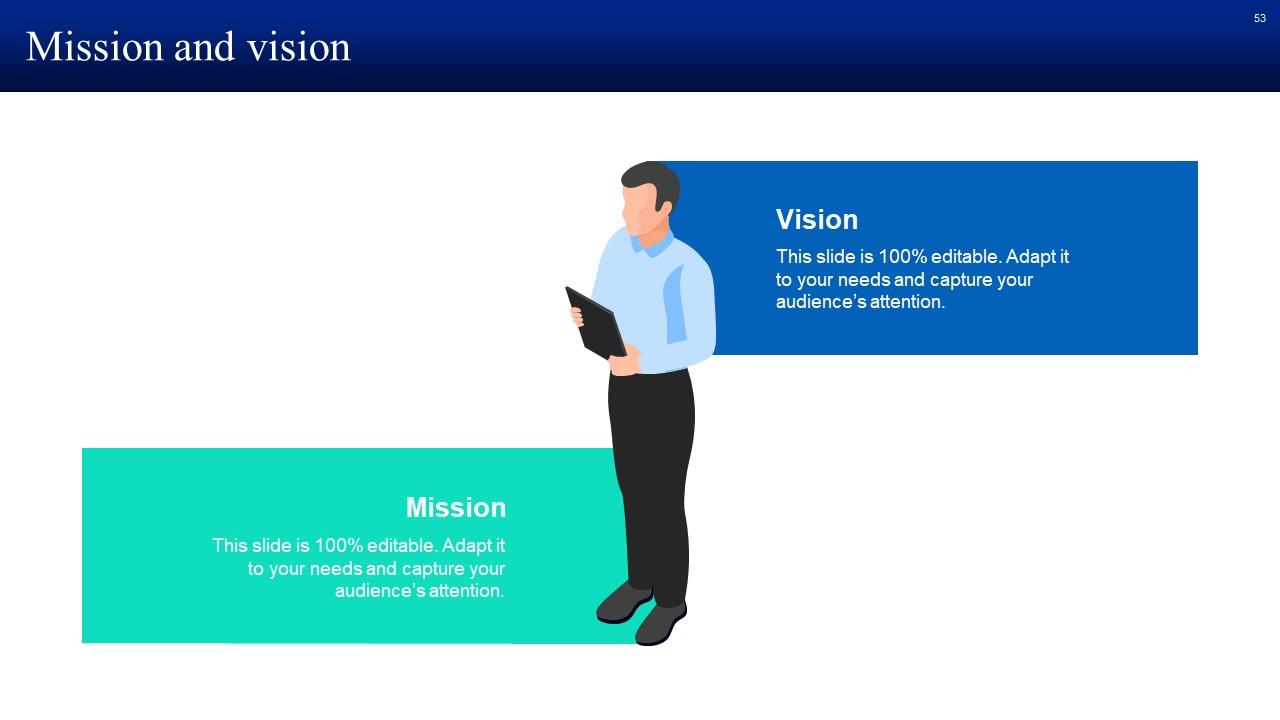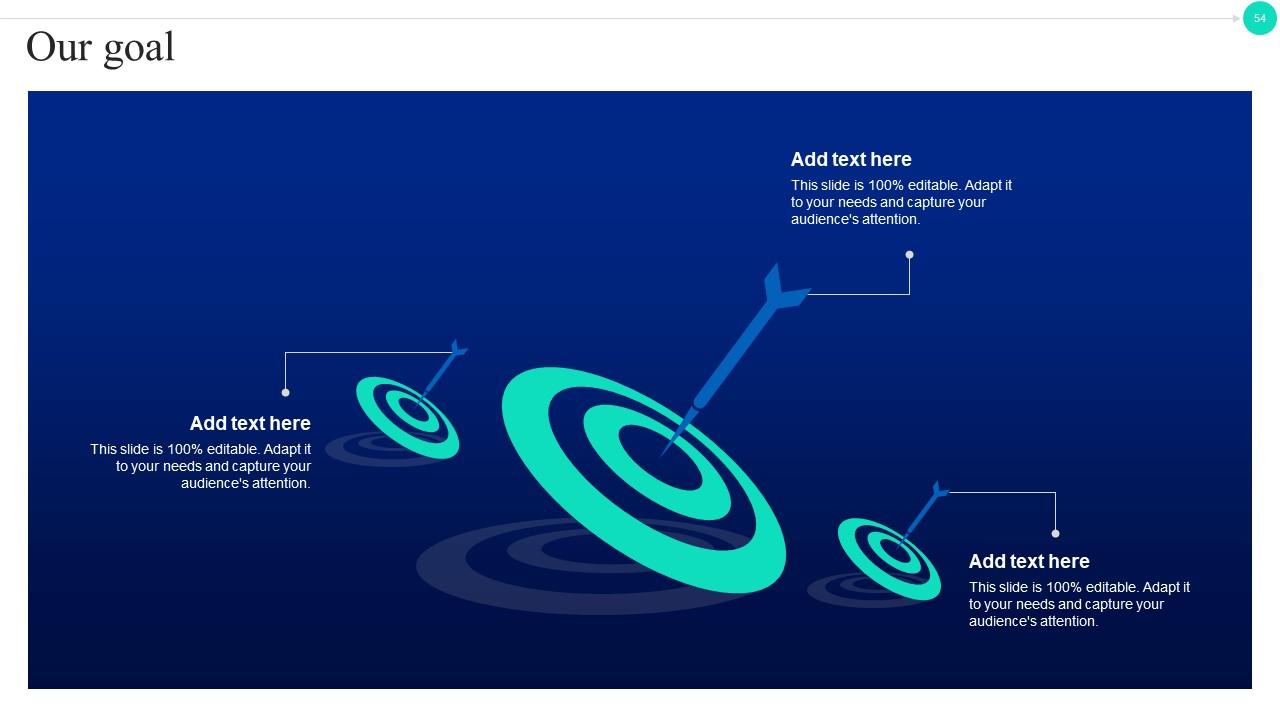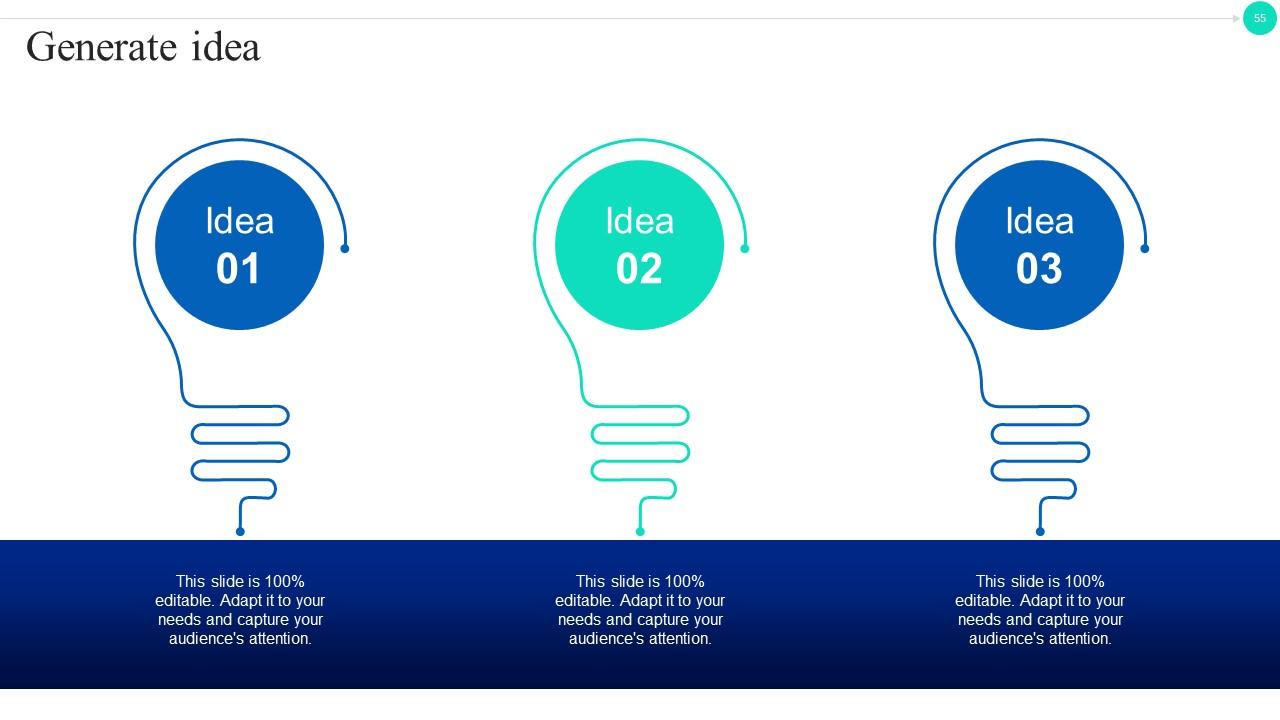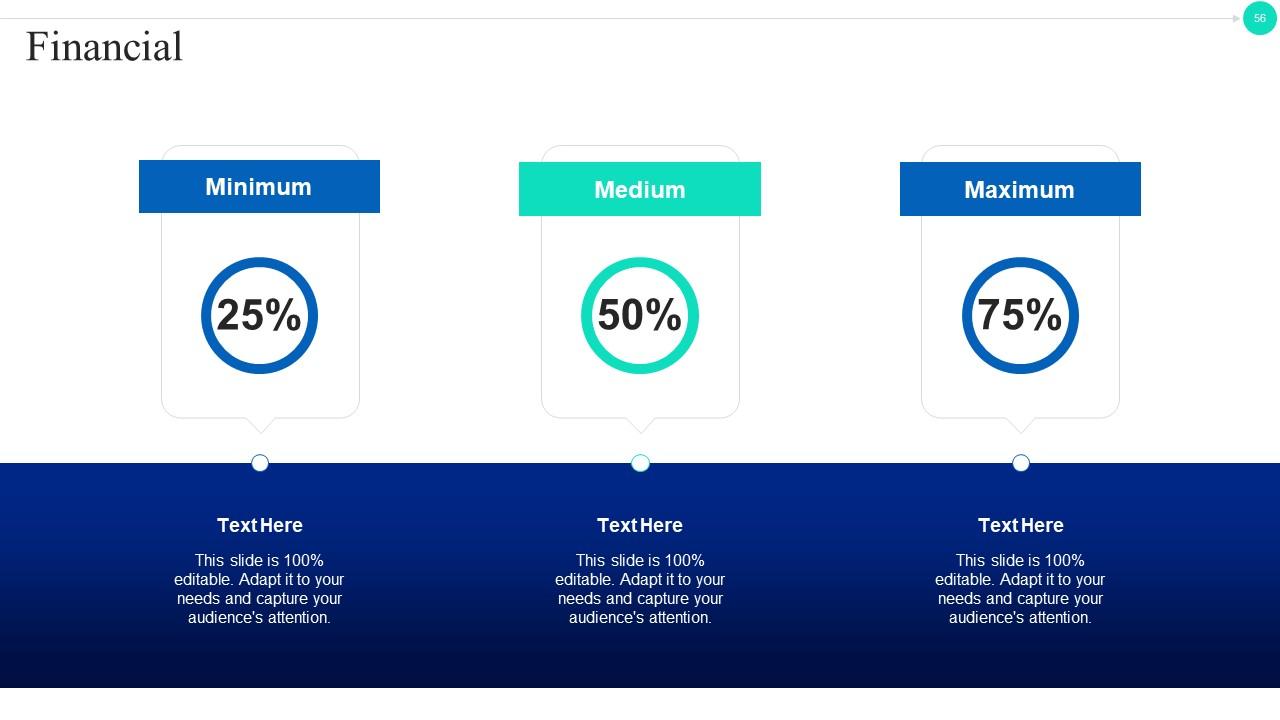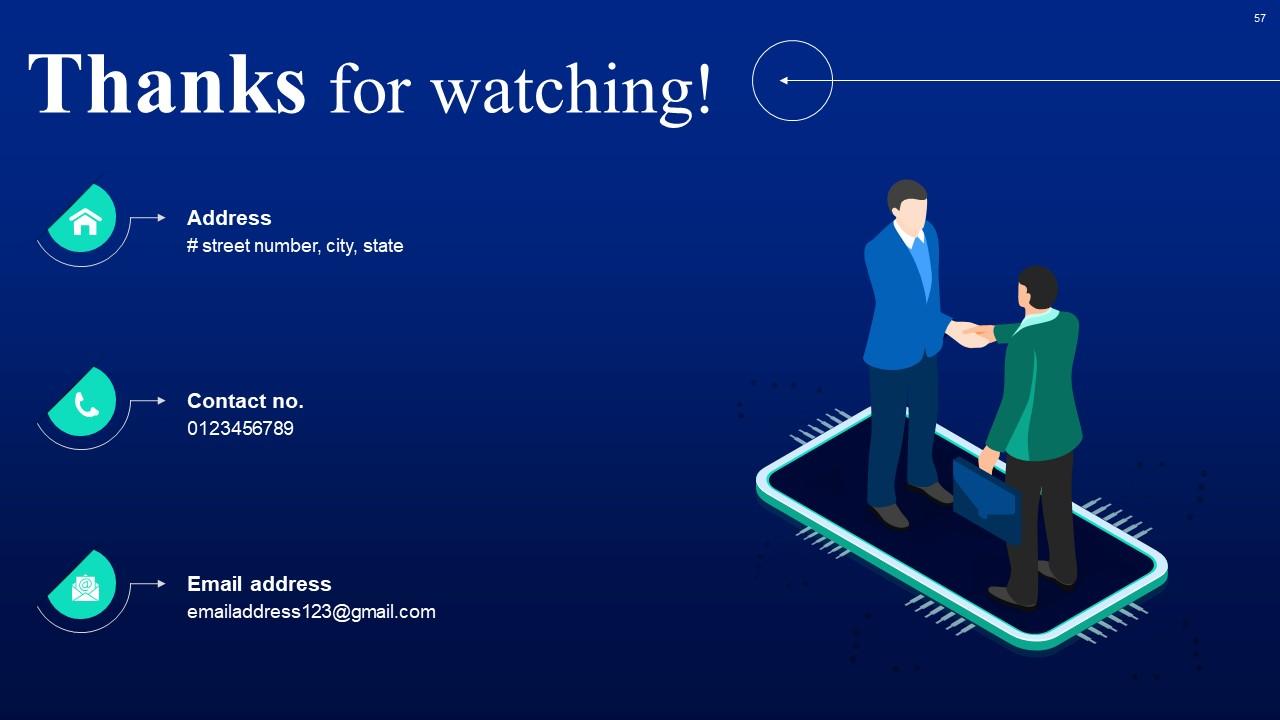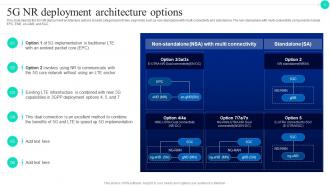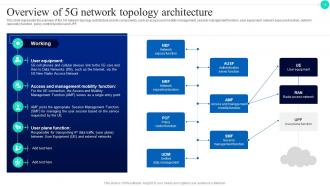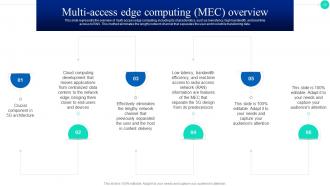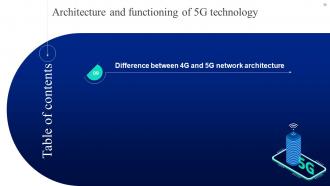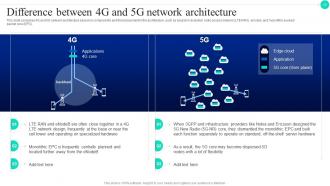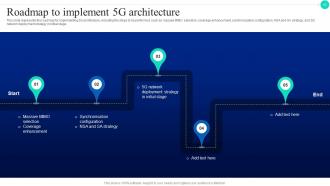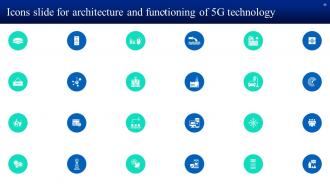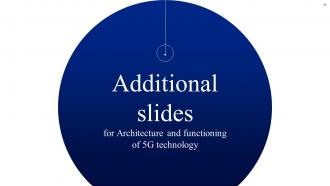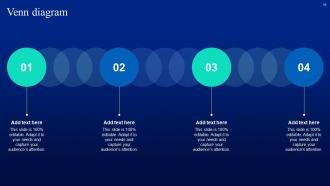Architecture And Functioning Of 5G Technology IT Powerpoint Presentation Slides
This PowerPoint presentation gives a brief idea about the architecture and functioning of 5G technology, including the evolution of 5G technology from 1G to 5G. It also includes slides that depict 5G protocol layers mapped with OSI stack, design and planning considerations for 5G architecture, and 5G NR deployment options. In this Architecture and functioning of 5G technology PowerPoint Presentation, we have covered the various types of 5G architectures such as 5G generic network, 5G network topology, 5G NR standard, and 5G or NR radio protocol stack. It also includes the functions of NR RRC, NR U-plane, SDAP, PDCP, RLC, and MAC Layers. Additionally, it incorporates a 5G radio access network, 5G core architecture, and Functional architecture for context and content-aware 5G platforms. In addition, this 5G technology architecture PPT contains the functional components of 5G architecture, such as frequency bands at the core of 5G networks, MEC, network slicing, NFV, and beamforming technology in 5G. It also comprises security in 5G technology architecture and security architecture in 5G technology. Also, the 5G Network technology Architecture PPT presentation includes the edge computing within the 5G network architecture, the difference between 4G and 5G network architecture, and a checklist to implement 5G architecture. Furthermore, this Working of 5G Technology template caters to a timeline, a roadmap to implement 5G architecture, and a performance tracking dashboard for 5G architecture. Download our 100 percent editable and customizable template, which is also compatible with Google Slides.
- Google Slides is a new FREE Presentation software from Google.
- All our content is 100% compatible with Google Slides.
- Just download our designs, and upload them to Google Slides and they will work automatically.
- Amaze your audience with SlideTeam and Google Slides.
-
Want Changes to This PPT Slide? Check out our Presentation Design Services
- WideScreen Aspect ratio is becoming a very popular format. When you download this product, the downloaded ZIP will contain this product in both standard and widescreen format.
-

- Some older products that we have may only be in standard format, but they can easily be converted to widescreen.
- To do this, please open the SlideTeam product in Powerpoint, and go to
- Design ( On the top bar) -> Page Setup -> and select "On-screen Show (16:9)” in the drop down for "Slides Sized for".
- The slide or theme will change to widescreen, and all graphics will adjust automatically. You can similarly convert our content to any other desired screen aspect ratio.
Compatible With Google Slides

Get This In WideScreen
You must be logged in to download this presentation.
PowerPoint presentation slides
Enthrall your audience with this Architecture And Functioning Of 5G Technology IT Powerpoint Presentation Slides. Increase your presentation threshold by deploying this well-crafted template. It acts as a great communication tool due to its well-researched content. It also contains stylized icons, graphics, visuals etc, which make it an immediate attention-grabber. Comprising fifty seven slides, this complete deck is all you need to get noticed. All the slides and their content can be altered to suit your unique business setting. Not only that, other components and graphics can also be modified to add personal touches to this prefabricated set.
People who downloaded this PowerPoint presentation also viewed the following :
Content of this Powerpoint Presentation
Slide 1: This slide introduces Architecture and Functioning of 5G Technology (IT). State your company name and begin.
Slide 2: This slide states Agenda of the presentation.
Slide 3: This slide shows Table of Content for the presentation.
Slide 4: This slide highlights title for topics that are to be covered next in the template.
Slide 5: This slide presents Evolution of 5G technology from 1G to 5G.
Slide 6: This slide highlights title for topics that are to be covered next in the template.
Slide 7: This slide displays 5G protocol layers mapped with OSI stack.
Slide 8: This slide highlights title for topics that are to be covered next in the template.
Slide 9: This slide represents Design and planning considerations for 5G architecture.
Slide 10: This slide highlights title for topics that are to be covered next in the template.
Slide 11: This slide showcases 5G NR deployment architecture options.
Slide 12: This slide highlights title for topics that are to be covered next in the template.
Slide 13: This slide shows Overview of 5G generic network architecture.
Slide 14: This slide presents Overview of 5G network topology architecture.
Slide 15: This slide displays 5G architecture as per 5G new radio (NR) standard.
Slide 16: This slide represents 5G/NR - radio protocol stack architecture.
Slide 17: This slide showcases Overview of 5G-NR layer 3 (RRC) functions.
Slide 18: This slide shows Structure of the NR U-Plane radio protocol.
Slide 19: This slide presents Service data adaptation protocol (SDAP) functions.
Slide 20: This slide displays Packet data convergence protocol (PDCP) layer functions.
Slide 21: This slide represents Radio link control (RLC) layer functions.
Slide 22: This slide showcases Media access control (MAC) layer functions.
Slide 23: This slide shows 5G radio access network architecture overview.
Slide 24: This slide presents Core architecture of 5G technology overview.
Slide 25: This slide displays 5G core network architecture functions.
Slide 26: This slide represents Functional architecture for context and content-aware 5G platforms.
Slide 27: This slide highlights title for topics that are to be covered next in the template.
Slide 28: This slide showcases 3 frequency bands at the core of 5G networks.
Slide 29: This slide shows Multi-access edge computing (MEC) overview.
Slide 30: This slide presents Overview of network slicing in 5G technology.
Slide 31: This slide displays Network function virtualization (NFV) and 5G.
Slide 32: This slide represents Overview of beamforming in 5G technology.
Slide 33: This slide highlights title for topics that are to be covered next in the template.
Slide 34: This slide showcases Security in 5G technology architecture.
Slide 35: This slide shows Security architecture in 5G technology.
Slide 36: This slide highlights title for topics that are to be covered next in the template.
Slide 37: This slide presents Edge computing within the 5G network architecture.
Slide 38: This slide highlights title for topics that are to be covered next in the template.
Slide 39: This slide displays Difference between 4G and 5G network architecture.
Slide 40: This slide highlights title for topics that are to be covered next in the template.
Slide 41: This slide represents Checklist to implement 5G architecture.
Slide 42: This slide highlights title for topics that are to be covered next in the template.
Slide 43: This slide showcases Timeline to implement 5G architecture.
Slide 44: This slide highlights title for topics that are to be covered next in the template.
Slide 45: This slide shows Roadmap to implement 5G architecture.
Slide 46: This slide highlights title for topics that are to be covered next in the template.
Slide 47: This slide presents Performance tracking dashboard for 5G architecture.
Slide 48: This slide contains all the icons used in this presentation.
Slide 49: This slide is titled as Additional Slides for moving forward.
Slide 50: This slide depicts Venn diagram with text boxes.
Slide 51: This slide contains Puzzle with related icons and text.
Slide 52: This slide shows Post It Notes. Post your important notes here.
Slide 53: This is Our Mission slide with related imagery and text.
Slide 54: This is Our Goal slide. State your firm's goals here.
Slide 55: This is an Idea Generation slide to state a new idea or highlight information, specifications etc.
Slide 56: This is a Financial slide. Show your finance related stuff here.
Slide 57: This is a Thank You slide with address, contact numbers and email address.
Architecture And Functioning Of 5G Technology IT Powerpoint Presentation Slides with all 62 slides:
Use our Architecture And Functioning Of 5G Technology IT Powerpoint Presentation Slides to effectively help you save your valuable time. They are readymade to fit into any presentation structure.
FAQs
4G networks use a centralized architecture, while 5G networks have a more distributed architecture that leverages edge computing and network slicing. 5G networks have a much faster data transfer rate, lower latency, and higher capacity than 4G networks. 5G networks use millimetre wave frequencies, which have a shorter range but can transmit more data than the frequencies used in 4G networks.
Network slicing in 5G technology refers to the ability to create multiple virtual networks on top of a single physical network infrastructure. Each virtual network can have different performance characteristics, security requirements, and traffic management policies, allowing it to serve different applications and users.
Multi-access edge computing (MEC) in 5G technology refers to the ability to deploy computing resources closer to the edge of the network, where the data is generated and consumed. This reduces latency and improves the performance of applications that require real-time processing, such as augmented reality, virtual reality, and autonomous vehicles.
Beamforming in 5G technology refers to the ability to direct a wireless signal in a specific direction using an array of antennas. This improves the signal strength, reduces interference, and increases the data transfer rate. Beamforming can also be used to support multiple devices simultaneously by directing the signal to each device.
Security considerations in 5G technology include protecting the network from cyberattacks, ensuring the privacy of user data, and securing the edge computing infrastructure. 5G networks use a variety of security technologies, such as encryption, authentication, and access control, to protect against threats. The network slicing capability also enables different security policies to be applied to different virtual networks, depending on their requirements.
-
The way SlideTeam professionals work is exceptional. Thanks for being so helpful!
-
Colors used are bright and distinctive.


